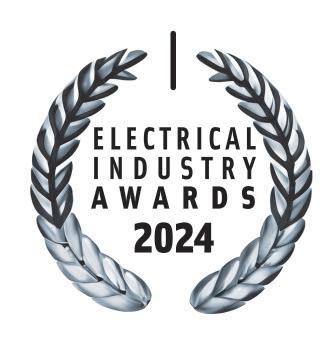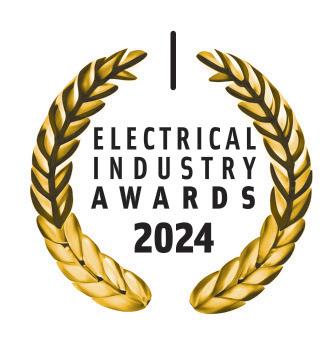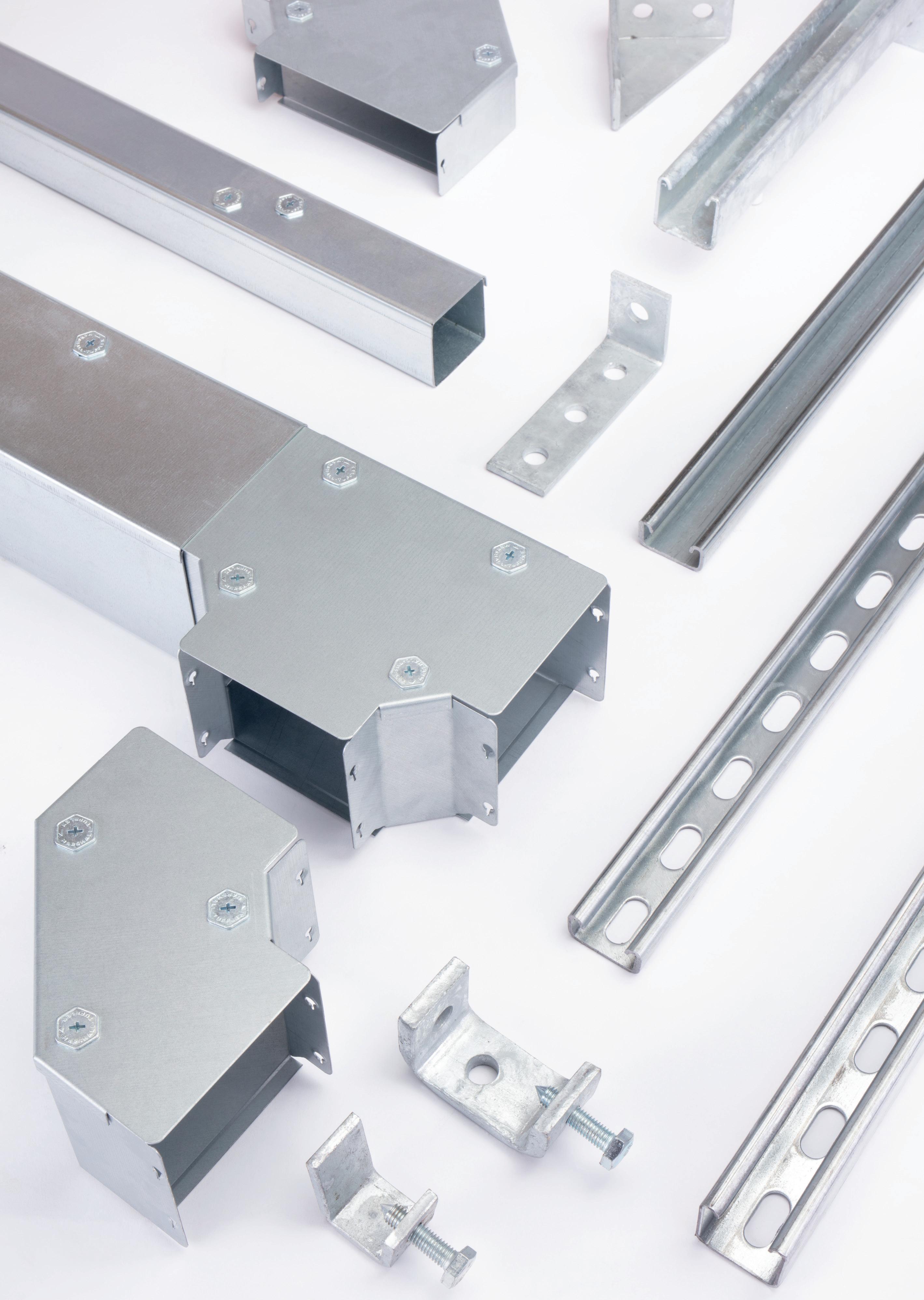


















Rated operational currents up to 50A & up to 1000V using a utilization category of DC-PV0, DC-PV2 or DC-21B. A solution for isolator applications for the solar photovoltaic market.






for entire installation from one source...







4, 6, 7, 18, 19, 40, 41
Electrical Industry Awards
08 Meet the judges Cover Story
10 Match the material to the project Contractor Corner
12 The impact of the Building Safety Act 2022
14 Take action to get paid faster Update
16 Onwards and upwards: AI and more
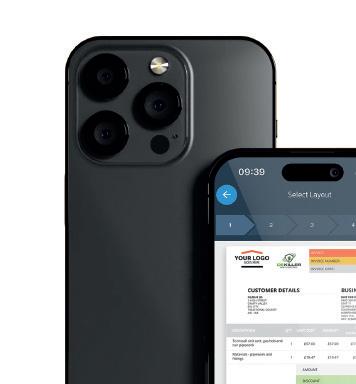







25 Develop Training launches confined space safety campaign for SMEs
HVAC
26 The road to net zero: UK’s Pioneering moves in home energy
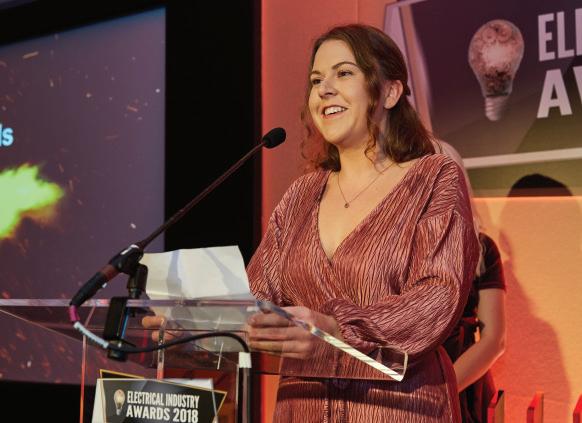
28 £70K saved, energy load is halved
30 What needs to change to accelerate the energy transition?
31 2024 set to be a record-breaking year for heat pump installations
32 The power of clean energy 33 More innovation is needed in the EV charger sector
34 UK must double rate of EV charge points to meet 2030 target
36 Q&A: Russell Olive, Vaylens
38 Q&A: James Moon, Zaptec UK
39 Plug into EV charging or miss out

Following the outcome of the general election on July 4, the electrical industry has welcomed the new government’s plans to tackle the skills gap, accelerate the transition to net zero, and reform building regulations.
Frank Bertie, Managing Director at NAPIT and valued judge at the Electrical Industry Awards, has praised the positive approach of the new Labour Government. He said: “It was encouraging to see new Prime Minister Keir Starmer talk about “the opportunity of clean British power, cutting your energy bills for good.”
“Additionally, it was promising to see new Chancellor Rachel Reeves outline plans to “get Britain building again,” including new housing targets and lifting the ban on the on-shore wind. NAPIT welcomes these changes to the planning system, as well as new housing and on-shore wind. These changes will provide our members with increased opportunities and confidence with planning their work.
20 Powering the electrical revolution
22 CPD and it’s continuing importance
24 Training for a sustainable future: why we need to embrace change
42 Electricians! Are you prepared to serve the homes of the future? Editor
“The renewed vigour in setting these ambitions can only stimulate confidence in the newbuild housing sector and for retrofit renewable installations in the existing UK housing stock. The commercial sector equally needs a similar intervention to provide confidence to allow planning, training and increased upskilling of the workforce.”
Lisa Peake, EDITOR, lisa.peake@purplems.com



Safety Groups UK (SGUK), the coordinating body for a network of around 73 local voluntary Occupational Health and Safety Groups across the UK, has appointed Alan Murray as its new President. Alan Murray brings with him a wealth of experience in the safety and health industry, having been a prominent leader in the field since the 1980s.

BGEN has appointed Amy Twist in the newly created role of head of sustainability. Amy will be responsible for driving BGEN’s goal of achieving net zero status, which involves finalising the company’s sciencebased targets in line with the Science Based Targets initiative (SBTi), as well as overseeing BGEN’s wider ESG strategy.

Scolmore Group is delighted to welcome three new members to its sales team with the appointment of two Group Key Account and Specification Managers, as well as an Area Sales Manager. Andy Cannell and Rachael McDermott join a growing specification team, and taking up the position of Click Scolmore Area Sales Manager for Merseyside and the North West regions is James Flower.

ESP is delighted to welcome a new member, Matthew Herron, to its sales team. Matthew joins the company as Area Sales Manager for the North London, Northern Home Counties and East Anglia regions. In his new role at ESP, he will be responsible for developing new and existing customer relationships at an independent and national level.

The Metcor Group, provider of integrated drainage, water management, pumping, and electrical services, today announced the appointment of Philip Fellowes-Prynne as Group Managing Director. Mr. Fellowes-Prynne brings a wealth of experience in leading sustainable building solutions to the role.
NICEIC, the UK’s leading certification body in the building services sector (owned and managed by Certsure LLP), is thrilled to announce its ‘Don’t Do DIY Electrics’ campaign has been shortlisted for the Best Marketing Project at the esteemed Association Excellence Awards.


Held since 2015, these awards highlight best practice and excellence among industry bodies, professional membership organisations, and trade unions in the UK and Europe.
NICEIC’s creative campaign was launched to raise public awareness to not attempt DIY electrics and the importance of using a competent, certified professional. It has seen a surge in consumer interest, driving close to a quarter of a million householders to find their local NICEIC-certified business through its ‘Find a trusted NICEIC tradesperson’ online tool. It emphasises “The safest way to
do DIY electrics ... is NOT to do DIY electrics.”
Head of Marketing and Communications at NICEIC, Sarah Gammon commented: “I am incredibly proud the Don’t Do DIY Electrics campaign has received this recognition. Electrical work in the home can be dangerous if not completed by a qualified and competent electrician. We really wanted to disrupt consumer behaviour with the aim to not only make householders think twice about undertaking DIY electrics but also to consider the smart and safe choice, which is to search for and use an NICEIC-certified business. I want to say a huge thank you to the team who have been involved in this for all their hard work. The response has been fantastic.”
The winners will be announced at a lunchtime Awards Ceremony at the QEII Centre, Westminster, London on Friday, November 8, 2024.



Fergus, the job management software designed for tradespeople, has announced a partnership with TrustMark.
Alongside the 14-day free trial, members of TrustMark will now have the chance to access Fergus for the first three months for free and take advantage of 15 per cent off for as long as they are a Fergus customer. The offer is open to all TrustMark Registered Businesses, giving them access to the beneficial rates.
“We are delighted to be partnering with TrustMark and to offer its 17,000+ Registered Businesses the opportunity to streamline and manage their workloads better, allowing them to focus on running their trade,” says Sam Buck, UK Partnerships Lead for Fergus.
Menna Lewis, TrustMark’s Commercial Manager said, “Partnerships are key to building value for our TrustMark Registered Businesses and we’re delighted to welcome Fergus as one of our newest partners.”
TrustMark members can access the offer at: www.trustmark.org.uk/business/memberbenefits/exclusive-offers. For a free trial of Fergus software visit www.fergus.com
Edwin James Group has announced the acquisition of the entire share capital of Pettits Ltd and its operating subsidiary Motivair Compressors Ltd (trading as “Motivair”).
The move introduces a new service offering, allowing Edwin James Group to strengthen its portfolio, enhance competitiveness, and explore new markets.
As specialists in compressed air management, Motivair manages approximately 9,000 assets, serving a bluechip customer base across the UK. Their focus spans the industrial, infrastructure, utilities and defence sectors.
The Motivair management team and all 100 employees will be retained as part of the
acquisition, ensuring continuity and stability for customers and employees.
Iain Beadle, CEO of Motivair, continued: “Joining Edwin James Group is an exciting development for the team at Motivair. We share a common vision of delivering exceptional engineering services and supporting our customers’ operational needs. This agreement will enable cross-business collaboration and ensure we can continue to deliver innovation and robust service levels to our customers.”
The deal, made possible due to additional investment from funds managed by Aliter Capital, follows Edwin James Group’s recent acquisition of control systems integration

business Automated Control Solutions (ACS).
The Group reported strong financial performance for the year ending February 2023, with a turnover of £175 million and an order book growth from £545 million in 2022 to £800 million in February 2023.










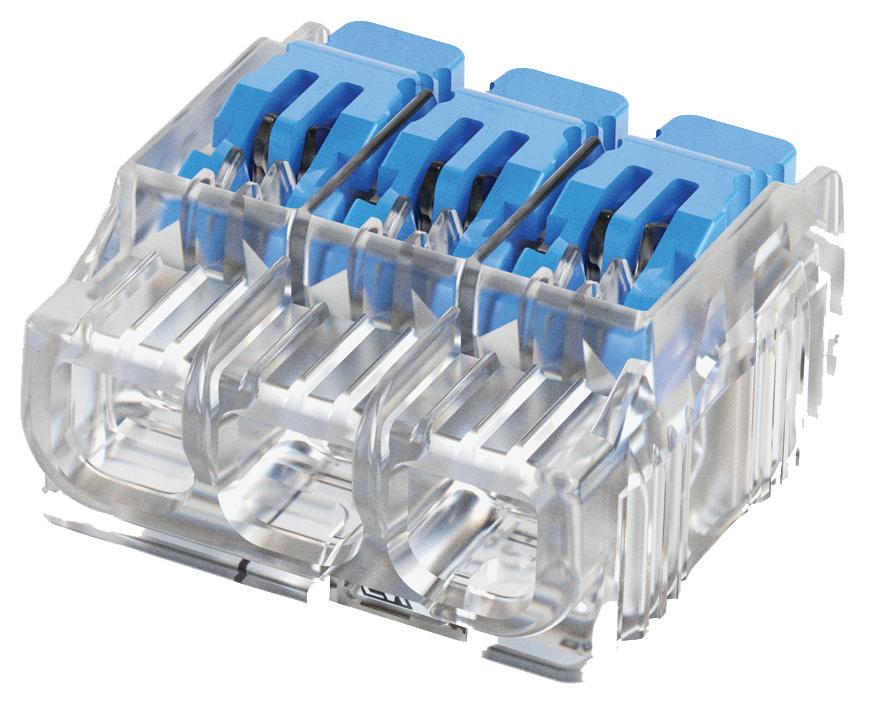






Mike Andrews, CEO of NAPIT steps up to take the new role of Divisional Managing Director for UK and Ireland Compliance and Certification Division within Phenna Group. This move will see Mike leading the division in which NAPIT are an integral part for the Phenna Group.

Frank Bertie, Chief Technical Officer, will be stepping into the role of Managing Director at NAPIT. Frank has been part of NAPIT from the very beginning and is perfectly positioned to continue to drive NAPIT forward and build on the continued growth.

Schneider Electric has announced that Kelly Becker has expanded her role as President of the UK and Ireland to include Belgium and the Netherlands. Kelly will share her expertise and best practice with the leadership team, led by David Orgaz D’Hollander, Cluster President of Belgium and Netherlands, to drive faster growth and capitalise on the considerable business opportunities in these countries. The changes reflect a senior management model that Schneider Electric has previously employed in Eastern Europe, leading to accelerated growth in the region that culminated in the recent opening of a new smart factory in Dunavecse, Hungary.

Recolight is pleased to announce the appointment of a new director, Steve Meadows, who will represent Signify on the Recolight Ltd board. Steve has been with Signify since 2007 and recently took over the role of Services & Operations Director Professional for Europe West.

Grafton announces the appointment of Frank Elkins as Chief Executive Officer of Selco and GB Distribution. Frank will join Grafton in August 2024 and will succeed Howard Luft, current Selco CEO, who will leave the business for a new position by the end of August after six and a half years in the role. Frank will also assume overall responsibility for Grafton’s trade distribution business in Great Britain.

myenergi has announced a global partnership with software-as-a-service platform installHUB. The agreement will see myenergi customers across Ireland, Australia and Germany connected with certified installers through the installHUB interface, providing a seamless experience from purchase through to installation. While the collaboration will save time and money for customers, installers will benefit from sales leads direct to their inbox.
Currently being adopted by electrical installers worldwide, installHUB is a comprehensive workflow management solution. The platform simplifies the process of receiving and managing jobs, offering functionalities to generate quotes, schedule tasks, manage operations, and process payments for services rendered.
Commenting on the partnership, Pearse McHenry, International Sales Director at myenergi, said: “installHUB adds numerous benefits for installers and consumers alike, enabling significant time-savings, increased productivity and an overall more seamless service for consumers. Partnering with the international installHUB team marks the next step in our global expansion by greatly improving the efficiency of our growing installer network and simplifying the purchase process. installHUB does all the heavy lifting, with the process virtually automated.”
For more information about installHUB, visit https://installhub.com/. For more information about myenergi, visit www.myenergi.com.
Aggreko upscales battery investment to $200m to support the energy transition
Aggreko has increased its global investment in mobile battery energy storage solutions (BESS) to around $200m, allowing more industries to access the latest in battery technology and reach net zero targets.
The company will be investing a significant proportion of this for growing it’s European BESS fleet to enable more customers to decarbonise its power provision, add resilience, improve efficiency and overcome power capacity constraints.
The introduction of this larger European fleet of small, mid- and large-size BESS forms part of Aggreko’s Greener Upgrades initiative, which is aimed at supporting customers move to greener solutions. In 2023, Aggreko Europe invested over $140m in its Greener Upgrades portfolio, increasing its fleet of new steam boilers, Stage V

generators, battery storage, oil free air compressors and chillers.
By bringing these new, greener technologies to the market, Aggreko is reinforcing its commitment to playing a key role in the energy transition, a key part of it’s new global sustainability framework, Energising Change.
For more information, aggreko.com/en-gb
Kensa’s ‘game-changing’ compact Ground Source Heat Pump, the Shoebox NX, has become the latest award-winning product from Kensa after it was named Product Innovation of the Year at Wednesday’s Unlock Net Zero Awards.
Launched in February this year, Kensa’s Shoebox NX is five times more efficient than a gas boiler and is the latest small heat pump innovation from the Cornwall-based ground source heat pump manufacturer and solutions provider. It stood out against other innovative nominated products from across the housing sector, impressing the Unlock Net Zero Awards judges.
Small enough to fit in a cupboard and capable of heating anything from a high-rise
flat to a five-bed home, the NX was designed with Kensa’s low-cost, low-carbon networked heat pump approach in mind. This system replicates the gas network model to present a viable mass-scale solution to decarbonise heat for over 60 per cent of UK homes.
Commenting on their decision, the Awards judges said:“Kensa’s Shoebox NX ground source heat pump is a highly innovative product that addresses multiple challenges facing the UK housing sector, from energy efficiency and decarbonisation to fuel poverty and climate resilience. A comprehensive approach to solving complex energy and environmental issues.”
TThe judges also gave highly commended recognition to two Kensa Contracting social

housing heat decarbonisation projects. These included the project for Thurrock Council, entered in the Green Homes Upgrade of the Year – Central & East England category, and a project for Gravesham Borough Council, entered in the Green Homes Upgrade of the Year – London & South category.
Dalkia has been awarded a £25m contract by IHP, a joint venture between VINCI Building and Sir Robert McAlpine, to deliver the mechanical, electrical, and public health services for the new Women’s and Children’s Building at the Countess of Chester Hospital.
Dalkia, one of the UK’s leading technical and energy solutions providers, has secured this prestigious subcontract from IHP, who have secured the project through the Procure23 Framework. This project will see the construction of a new facility providing maternity, neonatal, paediatric and gynaecology services, including a full delivery suite for 11 births, equipped with two obstetric theatres, a maternity ward comprising 24 single occupancy bedrooms designed for accessibility, a neonatal unit with capacity for 16 cots, and a modern children’s ward complete with access to overnight accommodation for patients and their families.
Upon its completion in 2025, the threestorey, BREEAM Excellent facility will

replace the existing building - one of the oldest on the estate. This new facility will not only provide the highest quality of care but also offer a comfortable and modern environment for patients and visitors.
Tony Walker, Dalkia Regional Director commented “We are delighted to have secured this project at Countess of Chester Hospital and to help create these new facilities that will provide support to patients and benefit the wider community. This project follows the successful delivery of The Paterson Building, and we are looking forward to working with IHP and the Trust to deliver this project, further enhancing our expertise within this sector.”
Electric Vehicle (EV) charge points from CTEK are to be installed in UK car parks managed by APCOA.
APCOA, which manages 1.8 million parking spaces in 13 countries, has signed a partnership supply agreement with CTEK which will see its CHARGESTORM CONNECTED units fast charging EVs at up to 22kW in APCOA car parks.
There is already EV charging available in many of the UK car parks APCOA manages, with more than 1,000 charge points installed and a further 300+ in the pipeline for this year.
APCOA’s first installations of CTEK charge points have just gone into car parks owned by Hillingdon Council in West London. APCOA is also installing CTEK charge points at 37 of the railway station car parks it runs for Govia Thameslink Railway (GTR).
Nathan Courts, CTEK’s Key Account Manager in the UK, said: “We are thrilled to be working with the biggest name in UK car park management. This agreement aligns perfectly with our mission to provide reliable and intelligent destination charging solutions for a greener future.
“Our new CHARGESTORM CONNECTED 3 (CC3) charge point meets the ISO15118 standard so is primed for the next wave of EV charging innovation and is designed to smoothly interact with APCOA’s frictionfree approach to the parking, payment and charging experience for drivers.”
CC3 is CTEK’s most advanced charge

point to date which is ready for the next era of EV adoption including ‘plug & charge’ automatic vehicle identification. It supports the latest OCPP 2.0.1 standard (Open Charge Point Protocol) for interoperability and communication.
Designed both for ease of installation and ease of use, CC3’s robust anti-tamper enclosure and advanced cyber security features, plus its dual socket options and up to 22kW charging, make it ideally suited to multiple charge point installations.
Daniel Forsberg, Marketing Manager EVSE at CTEK, said: “Partnering with APCOA enables us to significantly expand our footprint in providing cutting-edge EV charging solutions across the UK. With the installation of our advanced CHARGESTORM CONNECTED units, we are excited to contribute to a more sustainable future by making EV charging more accessible and efficient in key locations nationwide.”
For more information, visit ctek.com

Cable Services Group sparks hope with £80,000 UK-wide charity donation.
We are delighted to announce that the Cable Services Group, one of the UK’s leading specialist electrical distributors, has donated an incredible £80,000 in support of 25 national charities.
In 2019, we established our own charity to support local causes close to the hearts of the people who work in our branches in Wrexham, Stone, Liverpool, Glasgow and Swindon. The aim of the charity is to enrich people’s lives by making a positive difference at a local level.
Throughout 2023, our fantastic employees raised funds by organising various events and initiatives, including dress-down days and raffles. They also ran a competition where three lucky people won a day off work! The Cable Services 150 Club, a monthly prize draw, has been running successfully for many years and has contributed significantly to the total amount raised.
Employees at each branch nominated the charities. As well as choosing to support national causes, including the Alzheimer’s Society, Teenage Cancer Trust and SANDS Stillbirth and Neonatal Charity, they also selected a wide range of local organisations. These included Nightingale House Hospice in Wrexham, Staffordshire Women’s Aid, Carla Lane Animals In Need in Liverpool, the Beatson Cancer Charity in Glasgow, and the Swindon Hydrotherapy Pool. Food banks were also popular choices, with many employees wishing to support local people in crisis.
Huw Evans, Marketing Manager for Cable Services, commented: “Since launching the Cable Services Charity, we have been overwhelmed by the generosity and kindness of our colleagues across the Group. We are incredibly proud to be supporting 25 charities in total, all of which provide invaluable support to communities across the UK. It is heartwarming to see the results of our fundraising efforts spread far and wide across the communities in which we operate. By choosing and contributing to the charities we support, our employees have helped us make a positive difference to countless lives across the country.”
We are delighted to announce our brilliant panel of judges for the Electrical Industry Awards 2024. Well done to everybody who has sent over entries over the past few months – we wish you all the best! Decisions will be announced in October

HELEN ATKINSON Director of Member Services, ECA
Helen Atkinson, ECA’s director of member services, oversees ECA’s marketing and communications, regional and member services teams, as well as IT and digital development. Previously, Helen worked for the Construction Skills Certification Scheme (CSCS) as director of strategy and communications, and prior to that, she was director of client services for CORGI. Helen says: “When reviewing entries for these categories I look for innovative approaches, clear outlines of how customer experiences or sales have been improved, and details of how the activity outlined within the entry helped meet their organisation’s objectives.”






Paul started his career as an electrical apprentice in 1990. He moved on to become a NICEIC qualified supervisor and gained vast experience in the electrotechnical, gas, plumbing, heating, and renewable sectors, and the like, before joining NICEIC in 2009. Paul has held a number of positions within NICEIC, including helpline engineer, head of consulting, head of NICEIC, head of operations and, most recently, head of technical services.
Paul says: “Having started my professional journey as an apprentice in 1990, I fully appreciate the significance of fostering and empowering talent and am always keen to give back whenever possible. With this in mind, I am delighted to represent NICEIC on the judging panel for these prestigious awards. As in previous years, we will be looking for innovative solutions that deliver technical excellence, safety, and value.”
“These awards serve as a fantastic opportunity for the industry to come together and celebrate the achievements of the manufacturers, contractors and wholesalers within it. The judges play a huge role in in the event and we cannot thanks them enough for their contributions.”
Lisa Peake, editor of Electrical Times
With over 14 years of lighting industry experience, Dan Griffiths plays a key role in developing industry standards, educational resources, and advocacy efforts related to photometry, dark skies, smart lighting systems and sustainability. Dan’s commitment to advancing the technical landscape of the lighting industry ensures that LIA members have access to the latest information and best practices. Dan says: “Judging new lighting and electrical products is always exciting. Our industry is on the cusp of a revolution, driven by rapid technological advancements and the urgent need for sustainable solutions. As we navigate the path to net zero and a circular economy, we seek products that not only redefine performance and user experience but also lead the charge toward a greener future.”
FRANK BERTIE Managing Director, NAPIT
Frank Bertie, NAPIT’s Managing Director and trade association chairman has been an integral part of the electrical industry for over four decades. Initially starting out in the Scottish electrical contracting business, Frank moved to London in the late 80s to specialise in inspection and testing. As one of the founding members of NAPIT, Frank sits on a wide range of influential industry committees including JPEL/64 BS 7671, Electrical Safety Roundtable, Electrical Industry Forum, IET, and BSI. Frank says: “My time as a judge for the Electrical Industry Awards has been a rewarding experience where the wealth of innovation is encouraging for the bright future for all those within the electrical industry.”


JAY PARMAR Chief Executive Officer, JIB
Previously director of policy and membership at the British Vehicle Rental and Leasing Association, Jay is an experienced legal professional and is skilled in negotiation, member engagement and business planning. His focus at the JIB is to ensure that the organisation remains at the forefront of the industry’s fast pace of change; supporting members and further strengthening the value of membership. Parmar brings over 25 years’ experience from key positions across regulated industries in the gas, water, automotive and finance and was appointed as CEO for the JIB in 2019. Mr Parmar is also Chair of the CSCS Alliance – the collective voice of the 38 industry skill and competence card schemes that display the CSCS logo.










by Martin Russell, Product Manager at Marshall-Tufflex
The starting point for specifying the most appropriate cable management material is considering the overall project itself. In particular, the environment such as exposure to harsh and abrasive conditions and chemicals plays a big role in the material specification along with how the building will be used and installation times. Choosing the most suitable cable management solution with these elements at the forefront will ensure cables are adequately supported, contained and protected. What’s more, the right products will ensure the cables can be routed to the correct place while improving the experience of building users. When looking at metal products there are several different options including metal trunking, metal trays and wire baskets. These products will also need to be supported with solutions such as threaded rods, ladders, wire suspensions or metal strut frameworks.
Physical protection
Regulation 522.6 of the IET Wiring Regulations 18th Edition (BS 7671) provides guidance on protecting cables from a range of ‘external influences’ such as impact, abrasion, penetration, tension and compression. It states that in environments where medium or high severity impacts can occur, the cables should be protected using one or a combination of:
• The mechanical characteristics of the system
• The installation location
• Additional protection – such as installing a barrier to prevent impact
• In commercial environments, ceiling mounted metal cable trays and baskets route the cables out of the way, reducing the risk of mechanical stress on the cables and accidental damage.
If we look at metal systems, then they also offer outstanding durability when you are looking to ensure greater cable protection and durability. IP4X rating is regarded as the standard for best practice and indicates resistance to the ingress of solid objects, including dust and particles with a diameter greater than 1mm. Using a metal trunking with IP4X rating will protect the cables inside against solid foreign objects or debris, which could damage the cables within.
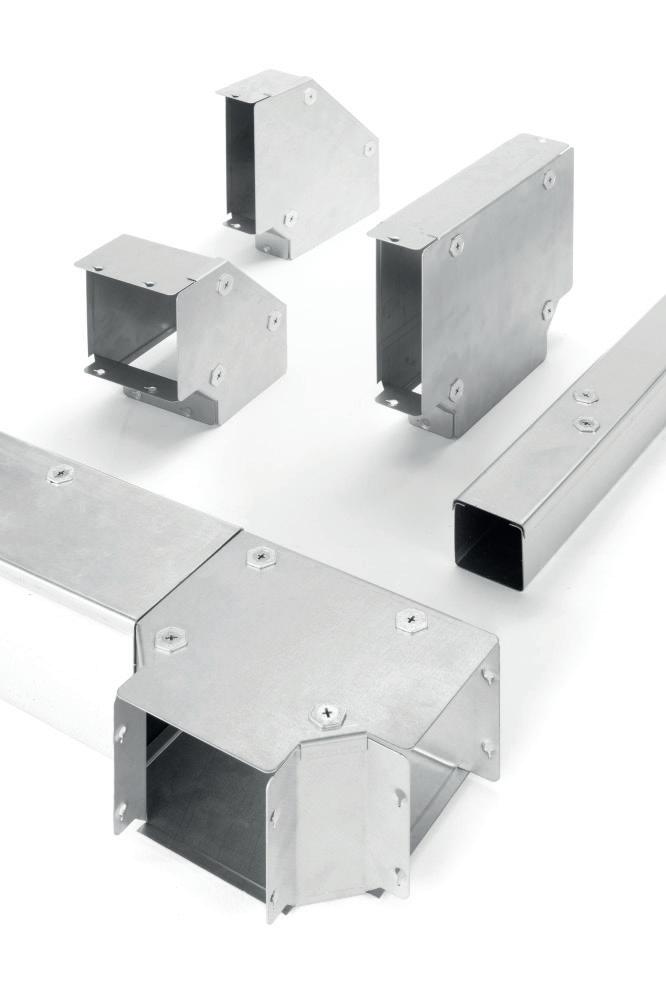
Within installations such as data centres, warehouses or distribution centres, wire baskets and/or metal cable trays also provide great ventilation, which helps avoid overheating.
Fire performance
Falling and fallen cables present a serious hazard to those evacuating as well as firefighters moving into and through the building. Regulation 521.10.202 of the Wiring Regulations, states that all cables should be adequately supported using noncombustible fixings to prevent premature collapse in the event of a fire. This means that cables need to be supported using a material with a melting point of 1,000°C for up to 120 minutes.
Both aluminium and steel are classified as non-combustible, low smoke zero halogen (LS0H) materials. However, although aluminium has excellent resistance to heat and can withstand temperatures of up to 655ºC, it does not meet the required standard and so, like PVC-U, aluminium products are not acceptable as a sole form of support. As such, where aluminium trunking or trays are used, cables must be fixed to the fabric of the building using fireresistant steel cable clips.
Ultimately, a higher level of fire safety can be achieved with a steel cable management system. Depending on the steel’s composition, it offers a melting point of between 1,200 and 1,500°C. If the system is connected to a fire-resistant element of the building’s fabric, then it can effectively protect from the risk of fallen cables.
Where there is a risk of radiated electromagnetic interference (EMI), often caused by a large number of power, data and other service cables being routed together, such as in large offices, the data and power cables need to be separated using a material that provides shielding. Both steel and aluminium options are ideal for this. Although this can be achieved by fitting metal dividers into PVC-U trunking, this does not protect against external sources of EMI, which can include any electrical device nearby. As such, steel or aluminium trunking systems can provide a more complete level of EMI protection.
Finally, selecting metal systems may simply be for aesthetic reasons. For example, hospitality and retail sectors have seen the industrial interior design trend grow significantly in popularity over the years, with uncovered high ceilings, visible ducting, exposed pipes and trunking. For this, a metal system fulfils the brief perfectly while also crucially meeting technical requirements too.
Where speed of installation is a key requirement, and there is no clear specification on material/system, wire baskets with integral couplers or interconnecting cable trays without the need for couplers offer fast fix options. For trunking installations, a system with turnbuckles fixings provides a quick and secure method of connecting the trunking and fittings together. Along with meeting speed of install requirements, these types of metal options also reduce install costs which combined could be a key deciding factor on material choice.
Metal cable management systems provide a wide range of benefits including durability, impact and fire residence not to mention EMI shielding but it is important to consider the specific project’s needs to ensure that you are selecting the right material for your individual project’s requirements. As well as a wide range of metal systems and solutions, Marshall-Tufflex also offers a comprehensive collection of PVC-U, GRP and Underfloor to Desk products. In addition, we can offer specialist advice when it comes to regulatory requirements as well as industry best practice. For more information about the Marshall-Tufflex range of cable management systems and accessories, visit www.marshall-tufflex.com.





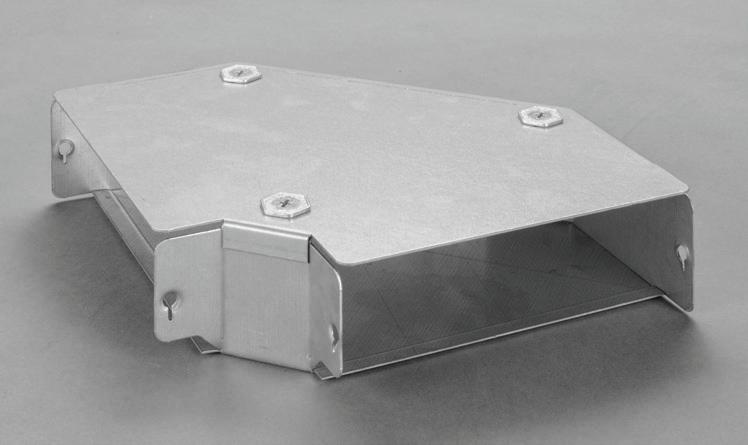




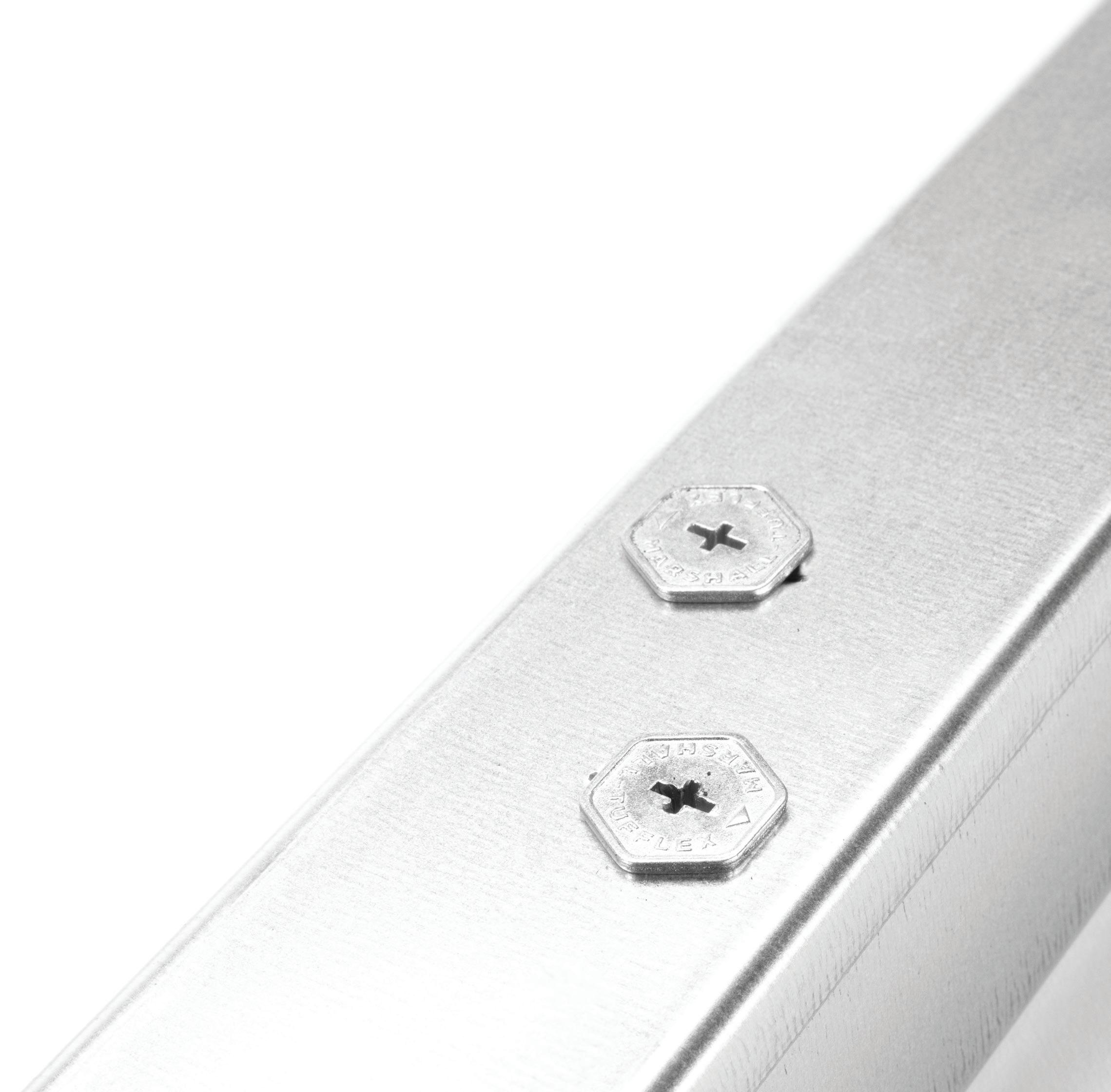

Alex Minett, global head of new markets at Veriforce CHAS, explores the role of competence in the new Building Safety Act and offers insight on how organisations can foster competence throughout their supply chains
The Building Safety Act 2022, which took effect on October 1, 2023, represents a pivotal shift in the UK construction industry’s regulatory landscape. This legislation introduces stringent dutyholder requirements to enhance accountability, particularly in higher-risk buildings (HRBs). A key component of this act is its focus on driving competence throughout the entire supply chain, ensuring that all parties involved in building projects meet high standards of skill, knowledge, and responsibility
At the heart of the Building Safety Act is the principle of accountability. The act mandates clear identification of dutyholders at every stage of the building process—from design and construction to occupancy. This clarity aims to eliminate ambiguity about who is responsible for compliance with building regulations, thereby fostering a culture of accountability.
The role of competence
Competence is a central theme in the new dutyholder roles introduced by the act. The regulations stipulate that anyone involved in the design and construction of buildings must possess the necessary skills, knowledge, experience, and behaviours to perform their duties effectively. This emphasis on competence ensures that the safety and quality of building work are not compromised by inadequately qualified individuals.
To facilitate this, the British Standards Institution (BSI) has developed Flex 8670, which includes PAS 8671 and PAS 8672 standards for principal designer and principal contractor roles, respectively. These standards provide a structured approach for demonstrating and maintaining competence, setting a benchmark for the industry.
The Building Safety Act introduces three primary dutyholder roles: client, principal designer, and principal contractor. Each of these roles has specific responsibilities:
Client: Responsible for appointing the principal

The act aims to drive a culture of competence throughout supply chains. For construction professionals, the message is clear: competence is not just an expectation but a legal obligation, pivotal to the future of building safety and quality.
designer and principal contractor and ensuring proper planning, managing, and monitoring of the project to comply with building regulations.
Principal designer: Manages the design phase, ensuring all design work complies with relevant regulations and coordinating with other dutyholders to maintain standards.
Principal contractor: Oversees the construction phase, ensuring that building work complies with regulations and that all workers are appropriately supervised and informed.
The act outlines three fundamental duties for all dutyholders¬ – this includes general designers and contractors as well as the roles above.
Duty to ensure compliance: Dutyholders must ensure that all work is designed and constructed in accordance with building regulations. This duty emphasises the importance of meticulous planning and execution to meet regulatory standards.
Duty to be competent: Dutyholders must have the requisite skills, knowledge, experience, and behaviours to fulfil their roles. For organisations, this extends to having the necessary capability to manage and execute projects effectively.
Duty to cooperate, coordinate, and communicate: Effective collaboration and clear communication among dutyholders are essential. This duty ensures that all parties work together seamlessly, sharing information and coordinating efforts to uphold safety and quality standards.
Transforming the supply chain
There is no doubt that the industry is still getting familiar with the Building Safety Act but the hope is that the focus on competence will be transformative for supply chains. By setting high standards for dutyholders, the act aims to ensure that all links in the supply chain—from architects and engineers to contractors and subcontractors—are equipped to deliver safe and compliant buildings. This holistic approach addresses the root causes of building regulations contraventions and mitigates risks associated with poor workmanship and oversight.
Furthermore, the act empowers the Building Safety Regulator to enforce compliance, providing them with the authority to take appropriate action against those who fail to meet the required standards. This enforcement capability is key for maintaining the integrity of the supply chain and ensuring that all dutyholders adhere to their responsibilities.
The Building Safety Act 2022 is a landmark piece of legislation that aims to elevate the standards of competence and accountability within the UK construction industry. By clearly defining dutyholder roles and emphasising the importance of skills and knowledge, the act aims to drive a culture of competence throughout supply chains. For construction professionals, the message is clear: competence is not just an expectation but a legal obligation, pivotal to the future of safety and quality.
As experts in building competent supply chains, Veriforce CHAS can assist organisations in ensuring the competence of dutyholders. Our expertise in verifying and accrediting supply chain partners can help ensure that all parties involved are capable and compliant, thereby enhancing overall project safety and quality. For more information, visit: www.chas.co.uk or call 0345 521 9111.






48 HOUR LEAD TIME
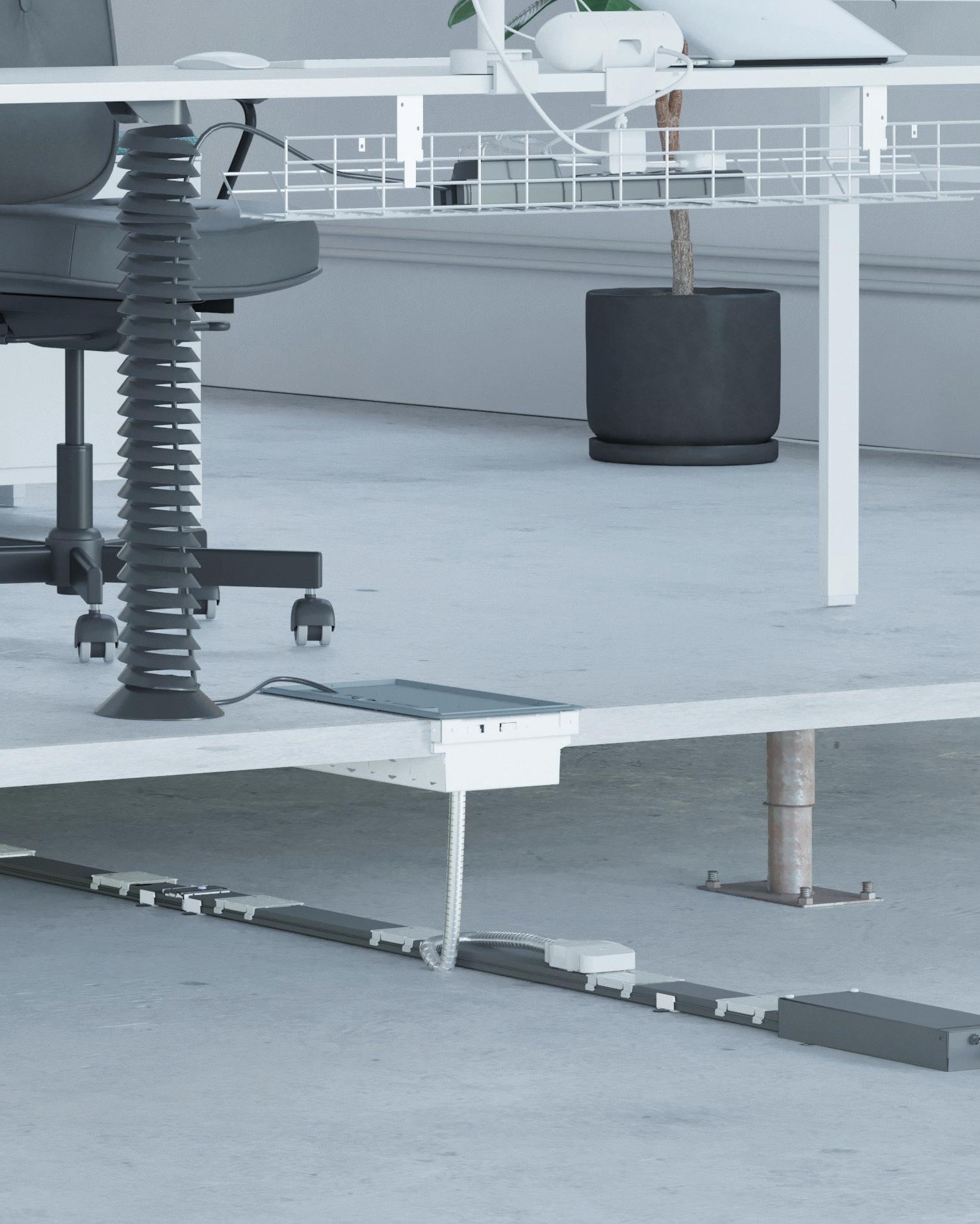
According to the UK Government, late payments and extended payment terms are significant challenges for businesses, particularly SMEs, which cite these issues as major barriers to growth. Business owners and managers often spend an excessive amount of time chasing overdue payments, leading to cash flow problems that can cause even well-established, viable firms to struggle.
In 2022, SMEs were owed an estimated average of £22,000 in late payments. As an electrician running your own business, you already understand that timely payments are crucial for maintaining healthy cash flow. Delayed payments can severely disrupt your operations, affecting everything from payroll to purchasing supplies.
Fortunately, there are several strategies you can implement to reduce the time it takes to receive payments, leveraging technology to your advantage. By taking action right now, you should see results very quickly. In fact, by offering more flexibility and more ways for customers to pay, the results could be almost instant.
1. Invoice on time
The first and most fundamental rule is to invoice promptly. Delayed invoicing inevitably leads to delayed payments, which can put a strain on your business. Keeping on top of invoicing is essential. Ensuring your invoices go out as soon as a job is completed can significantly improve your cash flow. If you find it challenging to manage invoicing on your own, consider getting support. Hiring a part-time bookkeeper or using an automated invoicing system can help ensure your invoices are sent out regularly and accurately.
2. Offer multiple payment options
Unexpected expenses can catch clients off guard, making a large upfront payment feel overwhelming. By providing various payment options, you can ease this burden. Offering the option to pay by credit card can be a gamechanger. This flexibility allows clients to spread out the cost of your services, making them more likely to settle their invoices promptly. Payment solutions such as PayPal, Stripe, or even traditional credit card processors can be integrated into your invoicing system. The easier you make it for clients to pay you, the faster you’ll receive your money.
3. Utilise Fergus pay
Fergus Pay, specifically designed for tradespeople including plumbers, gas engineers and electricians, integrates seamlessly with Fergus job management software. This feature

In 2022, SMEs were owed an estimated average of £22,000 in late payments.
As an electrician running your own business, you already understand that timely payments are crucial for maintaining healthy cash flow.
allows your clients to pay for your services by card instead of cash up-front. Fergus Pay not only enhances your customer service by providing flexible payment options but also improves your cash flow by reducing the time it takes to receive payments.
4. Get paid on-site with scan to pay
One of the most innovative features Fergus offers is the Scan to Pay option. This technology utilises QR codes to facilitate immediate payments on the job site. After completing a job, you can generate a QR code that your client can scan with their smartphone. They can then complete the payment using their card on the spot. This method is quick, convenient and significantly reduces the time spent waiting for payments..
5. Follow up on invoices promptly
Even with the best systems in place, there will always be clients who delay payments. It’s crucial to follow up on outstanding invoices promptly. Job management software like Fergus can automate this process by sending out payment reminders to clients. These reminders can be scheduled to go out at regular intervals, reducing the amount of manual work you need to do and ensuring that clients are consistently reminded of payments that are due.
Implementing a robust job management software system like Fergus offers several benefits beyond just payment tracking. It can help monitor expenses, create accurate invoices and oversee stock levels. This holistic approach ensures that your business runs smoothly and efficiently. Additionally, Fergus provides real-time financial insights, helping you identify which jobs are most profitable and where you might need to cut costs.
Additional tips for streamlining payments
• Set Clear Payment Terms: Ensure your clients understand your payment terms from the outset. Clearly state the due dates and any late payment penalties on your invoices.
• Use Electronic Payments: Encourage clients to use electronic payment methods. Bank transfers, credit card payments and digital wallets are faster and more secure than cheques.
• Deposit Requirements: For larger jobs, consider requiring a deposit before work begins. This practice not only helps with cash flow but also shows that the client is committed to the project.
• Regular Reviews: Regularly review your invoicing and payment processes. Look for bottlenecks or inefficiencies and address them promptly.
• Customer Relationships: Maintain good relationships with your clients. Satisfied customers are more likely to pay on time and recommend your services to others.
For more free information and advice on running a successful trade business, as well as a free trial visit www.fergus.com
Not sure what to choose? Our experts are happy to advise you. Get in touch with us: csc.uk@ledvance.com or call us on 01925 465 000
Not sure what to choose?
Our experts are happy to advise you. Get in touch with us: csc.uk@ledvance.com or call us on 01925 465 000



Mercury-containing and inefficient lamps have been phased out. The LEDVANCE tube portfolio contains LED alternatives for every requirement and all technical circumstances. Whether it’s for ON/OFF or dimmable installations or upgrading an existing T5 and T8 metal louver luminaire with a luminaire-in-luminaire principle. ledvance.com/ledtubes
Mercury-containing and inefficient lamps have been phased out. The LEDVANCE tube portfolio contains LED alternatives for every requirement and all technical circumstances. Whether it’s for ON/OFF or dimmable installations or upgrading an existing T5 and T8 metal louver luminaire with a luminaire-in-luminaire principle. ledvance.com/ledtubes
Mercury-containing and inefficient lamps have been phased out. The LEDVANCE tube portfolio contains LED alternatives for every requirement and all technical circumstances. Whether it’s for ON/OFF or dimmable installations or upgrading an existing T5 and T8 metal louver luminaire with a luminaire-in-luminaire principle. ledvance.com/ledtubes

Idon’t know if you’ve ever had a real surprise. You expected a certain outcome and something totally different happened.
Like Emma Raducanu winning the US Open or when Russia launched its full-scale war against Ukraine. For those in the field of artificial intelligence (AI), the arrival of ChatGPT provided that same sort of shock.
Lots of people had been working on AI for years. Actually, there had already been a lot of progress – Alexa provides a great egg timer and Siri provides voice to text, while Google can translate between languages. All unheard of a few years ago. This was all based on “machine learning” using vast amounts of data. It enabled machines to start learning from experience, a bit like humans do.
But ChatGPT was different because like Raducanu’s performance it produced results unlike what had gone before. Computers had been becoming gradually more and more powerful. This meant that the huge troves of information available on the internet combined with this power enabled the data to be processed. Suddenly, the results improved dramatically and nobody is exactly sure why.
This was the breakthrough that was ChatGPT. To give a real-life example from my company, I asked it to write a company song for Powered Now in the style of Bob Dylan, and it produced a pretty decent result. The thing that got people really going was that this breakthrough was unexpected.
The last few years have seen a rising tide of electronics and electrical equipment in the home, as well as an increase use of software and apps like Powered Now to run electricians’ businesses. However, it’s fair to say that this new tech hasn’t changed the basics of the job.






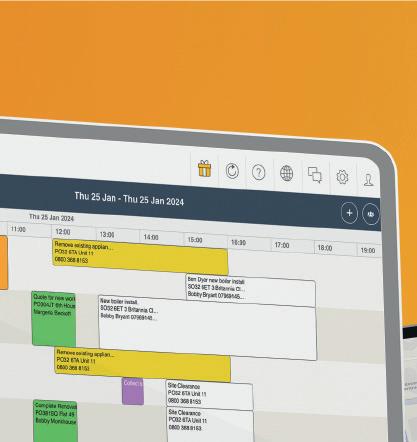



Benjamin Dyer of Powered Now looks at what impact AI (artificial intelligence) may have on the electrical trade

The most encouraging thing is that the application of AI coupled with robots in the trade space will most likely be to get rid of some of the most backbreaking parts of the job.
The question then is whether this new more powerful AI will really cause a change.
The issue may be different for people in white collar jobs. They have generally welcomed the arrival of AI and automation. It has eliminated many repetitive tasks, especially with robots and process improvements in factories. But there’s been some hand wringing prompted by the possibility that AI might take a similar wrecking ball to ‘professional’ jobs.
In one example, the Law Society recently published The Future of Legal Services which ominously they stated: “Numerous legal tech companies … are now exploring the extent to which … lawyers can be automated.”
In contrast, most studies predict that the trade professions are the least likely to be impacted by AI and robots. Being able to get up a ladder and into the loft while intelligently handling a variety of real-life problems is way beyond
the capabilities of today’s AI and robots. Robots tend to be good at just one thing and aren’t flexible. AI can’t yet be trusted when a wrong result could lead to someone being electrocuted. The mixture of knowledge, skills and dexterity needed in most trades is well beyond the capabilities of both todays and tomorrow’s robots and AI. The saying “no two jobs are the same” sums the situation up.
The most encouraging thing is that the application of AI coupled with robots in the trade space will most likely be to get rid of some of the most back-breaking parts of the job, although that will be less helpful for electricians. Slightly intelligent robots should be able to lift and manoeuvre heavy objects into place. This will actually raise skill levels, with grunt work being replaced.
It’s been said of technology that people often over-estimate the impact in the short term but under-estimate the impact in the long term. That was certainly the case with the internet. The other thing that’s been said is that predictions are hard - especially when they are about the future! So, my advice is to be quick to watch and slow to judge the impact of new technologies. All the best with navigating a changing world!
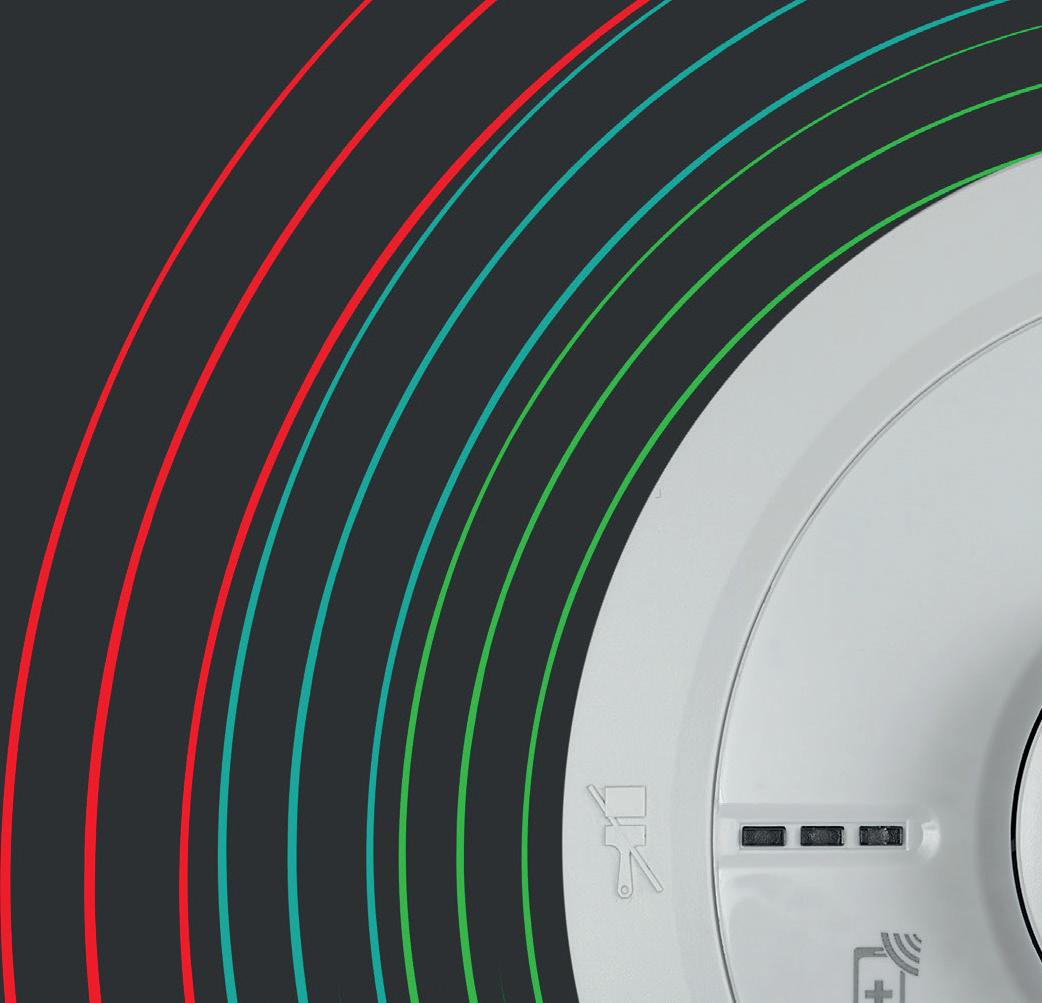













































The latest addition to the technologically advanced 30 0 0 Series, the Ei3030 combines individual Optical, Heat and CO sensors for the ultimate fire and CO response, while maintaining the simplicity that Installers love.
Smart, connected and future-proof.

Scan here to learn more about the Ei3030


Add the Ei3000MRF for wireless interconnection and data extraction via the Ei1000G Gateway














Major lighting brands including Signify, Holophane, Glamox, ASD, Bell Lighting, Prime Light, Mymesh, Stoane Lighting, Light Projects Evolve, Trojan Lighting and Silent Desing have thrown their weight behind Circular Lighting Live 2024.
The companies have signed sponsorship and exhibiting deals for the one-day conference and exhibition, organised by lighting industry sustainability authority Recolight and billed as the UK’s largest event dedicated to sustainable lighting. ‘This is a major vote of confidence,’ said Nigel Harvey, CEO of Recolight. ‘These leading brands understand the direction of travel of the sector, which is towards a sustainable low-carbon future.’
Th event, taking place at the Royal College of Physicians in London on Wednesday 9 October 2024, is designed to inspire and educate in equal measure with a programme exploring innovation in best practice, inspirational projects and design and procurement. It brings together lighting specifiers and suppliers to consider the practical ways we can collaborate to drive sustainability. This year’s event is themed by Recolight’s Hierarchy of Lighting, a philosophy of prioritisation which emphasises reuse and refurbishment in lighting projects.
Circular Lighting Live 2024 features leading experts, specifiers, innovators and policy makers who will share their insights into forthcoming standards and legislation, emerging technologies and new business models.The keynote speaker is Signify chief design officer Ton Borsboom, who will explore how AI will accelerate product development and project design. Rachel Hoolahan, associate at architectural practice Orms, will explain how a new material passport scheme will work for luminaires while Kael Gillam, associate lighting designer at Hoare Lea, will untangle environmental data including EPDs, LCAs, TM66 and TM65.2.
Other speakers include Irene Mazzei, head of development at Stoane Lighting, Jonathan Rush, director at Hoare Lea, Paul Beale, founder of 18 Degrees and Neil McLean, of Lutron and chairman of the LIA’s sustainability working group.
Further details and bookings are available at www.circularlighting.live
A new pedestrian and cycle bridge has been built at Newport station in Wales, forming a vital crossing over the Great Western Mainline Railway. The bridge has been introduced to encourage active travel and improve connectivity for residents and commuters.
Lighting was a key aspect of the bridge’s construction, with a particular focus on safety, security and accessibility. The design called for a discreet handrail solution to illuminate the floor deck while also supporting users with limited mobility. Lighting was also specified to enhance the surrounding public spaces.
Leading M&E consultants, Vitec, were appointed to oversee the lighting and approached DW Windsor to fulfil key elements of the scheme’s design.
To satisfy the brief, DW Windsor supplied products from its award-winning Garda illuminated handrail range, adapted to suit the project’s unique requirements. For the ramps and stairs, nearly 500m of seamless




Industville, the home of sustainably handcraftedlighting, decor and furniture, has been selected byesteemed department store John Lewis to sell acurated selection of its lighting via the retailer’sonline channel.
The partnership signals significant expansion inIndustville’s retail presence and reinforces itsposition as a leader in the lighting category. Launched on 26th June, a selection of 27Industville original designs are available now onthe John Lewis website, giving its customers theopportunity to infuse their homes with a dose ofIndustville’s signature style. The edit comprises anarray of elegant yet functional pieces includingtimeless pendant lights, contemporary wall fixturesand sculptural table lamps.
“We’re incredibly proud to partner with John Lewis,” says Mara RypacekMiller, founder of Industville. “Their reputation for excellence and commitment to quality aligns perfectlywith our core values and together we look forward to illuminating homesacross the nation with our designled, handcrafted lighting.The collaboration is already off to an exciting start with orders rolling in andwe’re excited to see what the future holds.”
For more information and to explore the collection, visit: www. johnlewis.com/brand/industville/







stainless-steel handrail was installed, fitted with 300mm Garda Classic asymmetric modules.
Special attention was paid to how the handrail attached to the balustrade fins, which had predrilled holes, meaning coordination between all parties was needed to ensure everything fitted together on site without modification.
For the main bridge deck, where handrail could not be used for safety reasons, DW Windsor developed a bespoke solution, integrating Garda LED modules directly into
the two parapet structures slotted between the vertical ribs. Additional lighting was also supplied for the central section between these structures where, again, handrails could not be used. Here, the designers came up with an innovative solution to vertically mount recessed Ligman Lightalk luminaires between the balustrade fins.
To achieve the required light levels, 3,000K LED modules were spaced at approximately 2m across the whole structure. This provided a consistent appearance and ensured the scheme delivered an average maintained illuminance of 30 lux and a minimum uniformity of 0.5 to comply with British Standards.
Shaun Davies at Vitec, commented: “The Newport Station bridge provides residents and visitors to the area with a safer, more accessible link over the mainline railway. With its distinctive design and discreet lighting scheme, the new bridge has helped to transform a neglected area into a vibrant public space.”
Goboservice is a trusted manufacturer of custom gobos and low-consumption, high-definition projectors that illuminate buildings, streets and businesses around the world. Through LITE, Goboservices’ high-efficiency, highbrightness projectors are available - suitable for a wide range of applications and projects.
Recognising the need to drive forward sustainability in the lighting sector, every Goboservice projector is designed with great attention to energy efficiency. Demonstrating this, Goboservices headlamps deliver the best-performing lumen/watt ratio in their class.

Unrivalled image quality is achieved through lenses with anti-reflective coating and quality optics to ensure sharpness every time. Adding to the benefits, the high luminous efficiency of Goboservices projectors delivers reduced consumption even for prolonged use. The low price of the lamps - about one-third of the cost of the lamps of a video projector - enables low running costs.
LITE’s Managing Director Steve Hainsworth said: “At LITE, we carefully curate our portfolio to ensure our clients have access to the best and most advanced market-leading lighting solutions. Through our recently formed partnership with Goboservice, we have been able to offer our clients new and exciting solutions. For those working in events, exhibitions and entertainment, Goboservices high-performance gobos and projectors can open a world of visual spectacle. These technologies provide the opportunity to create unique, innovative and captivating lighting effects.”
Goboservices gobos and projectors are proving to be of value to LITE clients, spanning both existing and new relationships. Partnering only with a number of market-leading manufacturers of dynamic LED and controls, LITE’s clients are assured they have access to the best-in-class lighting solutions.
For further information on LITE Ltd, visit https://www.lite-ltd.co.uk/architecturalindex.html.

The ICEL Emergency Lighting Conference is taking place on Thursday, September 12, at the Cavendish Conference Centre in London, with registration from 8.30am and concluding at 6pm following a networking and drinks reception. This event has been carefully curated by ICEL to deliver insights and expertise in emergency lighting and is free to attend thanks to the generous sponsorship of our sponsors.
By joining us, you will have access to speakers and experts in their respective fields, who will address your questions, explain your responsibilities, discuss any legislative changes, and share strategies to drive change in the future. Presentations delivered throughout the day will enhance your knowledge and give you the tools to form a better understanding of the latest advancements. A printed copy of ‘The ICEL Emergency Lighting Pocket Guide for End-Users’ will be available to all participants.
With networking opportunities to interact and collaborate with industry professionals, emergency lighting manufacturers, and other influential collaborators, you can forge partnerships, exchange ideas, and explore new business opportunities that will drive success in your endeavours.
With Professor Ed Galea already announced as the keynote speaker, the current sponsors are as follows, with more to be announced:
- Headline: P4
- Gold: Clevertronics, ABB, and DALI Alliance
- Silver:, Fox Lux, Prime Light, and LuxBox
- Bronze: TWinFM, Joint Industry Board (JIB) and Society of Light and Lighting (SLL)
There are limited sponsorship spaces remaining. If you’re a member of The LIA & ICEL, please get in touch about sponsorship opportunities on icelconference@thelia.org.uk.
LIA announced as an official partner of Smart Buildings Show 2024


Smart Buildings Show 2024 is delighted to announce the Lighting Industry Association (LIA) as an association partner. The LIA was created following the merger of the Lighting Association (LA) and the Lighting Industry Federation (LIF) in January 2012. Since then it has grown an established reputation for representing and assisting lighting related companies and continues to support its members to achieve excellence in product design, specification and performance.
An increasing shift towards LED lighting is helping to improve the UK’s position in its aim to meet its net zero carbon emissions by 2050 target. An effective lighting control system can add to a building’s environmental credentials by helping to ensure the lights are only on at times they are needed and only in the places they are needed. It is therefore becoming widely recognised that lighting controls will play a significant role in creating intelligent buildings fit for the 21st century.
Visitors to the show will have the opportunity to discover more about the latest lighting control products, and they can learn more about their relevance to the smart buildings industry in the Controls and Networks Theatre, which is sponsored this year by the DALI Alliance - the internationallystandardised protocol for digital communication between lighting control devices.
Smart Buildings Show Sales Manager Claire Hatchett expressed her delight at having the support of the LIA, saying: “We are very proud to welcome the LIA on board as an association partner of Smart Buildings Show. The LIA is a hugely influential organisation in a sector that will play a vital role in helping to create intelligent and sustainable buildings for the future. We have a number of exhibitors involved in lighting controls and we are looking forward to helping spread the word about their increasing importance in smart building design.”
Taking place at ExCeL London on 9th-10th October, Smart Buildings Show 2024 will connect visitors to the latest information and technology in the smart buildings industry. A full conference programme across four theatres will provide visitors with a wide range of relevant talks and discussions relating to the smart buildings industry.
To keep up to date with exhibitors, speakers and seminars visit: https://smartbuildingsshow.com
Battery storage is one of the fastest growing technologies in the renewable energy industry, allowing homeowners to store self-generated electricity, optimise smart tariffs and save money on their energy bills. Mark Krull from Logic4training explains the training that electricians need to install this game-changing tech
Battery storage installations are at a record high and growing, according to MCS, creating new opportunities for skilled electricians who want to deliver high-performance, long-lasting energy solutions to their customers.
Average monthly installations have increased from 34 in 2022 to 400 in 2023, when a total of 5,000 electrical energy storage systems (EESS) were installed. In March 2024, monthly installations exceeded 1,000 for the first time, A critical key that unlocks the low carbon potential of our homes, EESS optimises electricity generated from solar PV and enables smart use of off-peak electricity, powering heat pumps and EVs for less and allowing homeowners to take energy self-sufficiency to the next level.
One of the challenges of solar PV is that most of the electricity is generated when it is not needed, i.e. during the daytime when it is sunny. This leaves homeowners in the uncomfortable position of exporting self-generated electricity back to the grid for a pittance and still paying a premium when their heat pump is working hardest. EESS is the logical solution, enhancing the performance of key renewable technologies and optimising energy usage to maximise savings.
There is a huge gap between the number of homes with solar PV – approximately 1.3 million – and the number of domestic batteries, which stands at around 10,000, highlighting a largely untapped market that is predicted to see rapid growth.
The removal of VAT from EESS installations in February this year has reduced the financial burden on existing PV owners who want to upgrade their systems to include storage, while also benefiting homeowners who need to take a more phased approach to energy efficiency. While 85 per cent of batteries are still installed alongside new solar PV installations – a combination that has enjoyed 0 per cent VAT since 2022 - the extension of the zero rate to include standalone EESS removes red tape for homeowners and increases access to renewables at all stages of the lifecycle. If homeowners are free to approach energy efficiency projects in stages they can minimise

A critical key that unlocks the low carbon potential of our homes, EESS optimises electricity generated from solar PV and enables smart use of off-peak electricity.
the burden of upfront costs, increasing flexibility and stimulating uptake of renewables. There is also a strong case for EESS to be used as a standalone technology without solar PV, particularly for EV drivers. Many leading energy providers now offer innovative smart tariffs that facilitate load shifting – storing cheap off-peak energy for use during peak times – an approach that can lead to significant energy savings for the end user.
As homeowners become more aware of the benefits of EESS and upfront costs fall, discussions about solar PV installations will rarely come without EESS enquiries. Electricians and solar PV installers can prepare by gaining the relevant skills and qualifications to deliver EESS systems that complement solar PV and other low-carbon, energy efficiency measures. EESS training is designed to upskill experienced electricians with experience of electrical installations, and associated inspection and testing, delivering the practical skills and theory required to join this emerging marketplace. The ideal accompaniment to solar PV training
but also available on its own, the course covers the installation and maintenance of EESS/battery storage systems, including practical training on purpose-built rigs, regulations and safety considerations. Candidates will learn how to correctly size a battery based on individual applications to meet customer needs and ensure optimum energy bill savings.
The LCL Awards Level 3 Qualification in the Design, Installation & Commissioning of Electrical Energy Storage Systems The course is recognised by the Microgeneration Certification Scheme (MCS) and can be used towards gaining MCS certification. An MCS certified system will give customers peace of mind, is a pre-requisite of any grants that may be available and will help end-users achieve the best export tariffs for power returned to the grid.
The rise of domestic battery storage systems marks a significant milestone in the electric revolution. As the adoption of EESS continues to grow, driven by consumer demand for energy efficiency and self-sufficiency, market demand for skilled installers is also growing. By embracing market trends and gaining the right qualifications and certification, electricians and solar PV installers can deliver high-quality, energy efficient renewables that optimise electricity usage and cut energy bills, while also playing a pivotal role in the low-carbon future. www.logic4training.co.uk









The NAPIT Technical Team and other key stakeholders in the renewable energy industry have developed a NEW Solar PV practical guide. It’s designed to help electricians and renewable energy installers gain a better understanding of, and improve their ability to design, install and commission, solar photovoltaic (PV) systems.














Kirsty
The industry view of Continuing Professional Development (CPD) really shifted during the pandemic. Electricians having more free time on their hands, turned to upskilling themselves, but I think this has really highlighted how little training and further learning was being undertaken by previously. Competence scheme providers have long been advocates of CPD, along with industry groups, such as the E5 group regularly encouraging contractors to ‘level up’ by increasing their knowledge, but are we slowly heading back to where we were?
As a manufacturer in quite a specialised area, I have always seen CPD as an extremely important area of the industry. With new technology emerging so fast, electricians run the risk of being left behind if regular CPD is not completed.
Due to the pressures of working as an electrician, CPD gets put on the back burner, especially for small contracting companies and sole traders, who have to lose income to complete valuable training. I saw so many people on social media who made massive accomplishments in learning and training during lockdown, that during a normal period, would have been impossible.
The availability and suitability of free CPD opportunities is something that as an industry we need to address moving forwards. From my
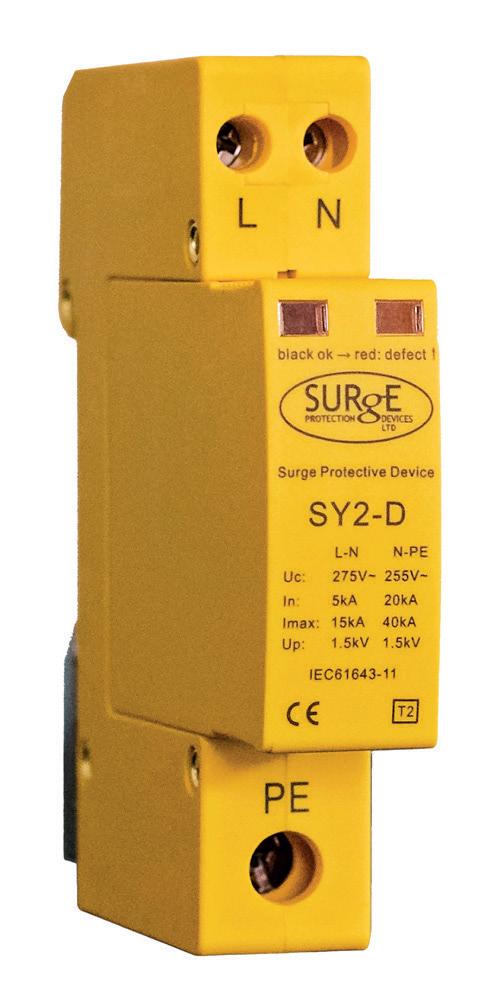
point of view, I feel that manufacturers have an obligation to offer CPD opportunities to anybody that wants to learn. There was been a massive increase in the CPD offered during the pandemic but this does seem to have decreased unfortunately or put behind a pay wall.
Working for a company that specialises in surge protection, my career has always has always centred around training and CPD. Before the 18th edition, surge devices were not widely used within most sectors of the industry, so my job entailed lots of educational talks, seminars, CPD events, appearing on industry podcasts and writing magazine articles. When lockdown happened and it put a pause on our in-person events, I realised that I could carry on delivering quality training on a virtual basis and that led to launching the free SPD Training Academy.
I was absolutely overwhelmed with the response and one live session a week quickly became a daily event! I have now trained thousands of electricians, specifiers, electrical consultants, lecturers and apprentices throughout every level of the electrical industry, all for free, without leaving my office. I have had some lovely feedback and my sessions have been met with such gratitude, that I think it has really highlighted to me the lack of free, understandable, CPD being offered throughout the industry.
We wanted to ensure that people could still take part in training, as the world opened back up, so we recorded 10 modules, all 10-15 minutes long, which breaks down all different aspects of SPDs. It covered everything from the basics of what an SPD does and how it works, through to installation and specific requirements, such as for solar PV. It is fully online, so you can log in and do the training session in your own time then contact me directly with any questions.
I would like to see more manufacturers offering CPD as a way to help the industry, rather than a sales exercise. I have given training to contractors and consultants that have openly
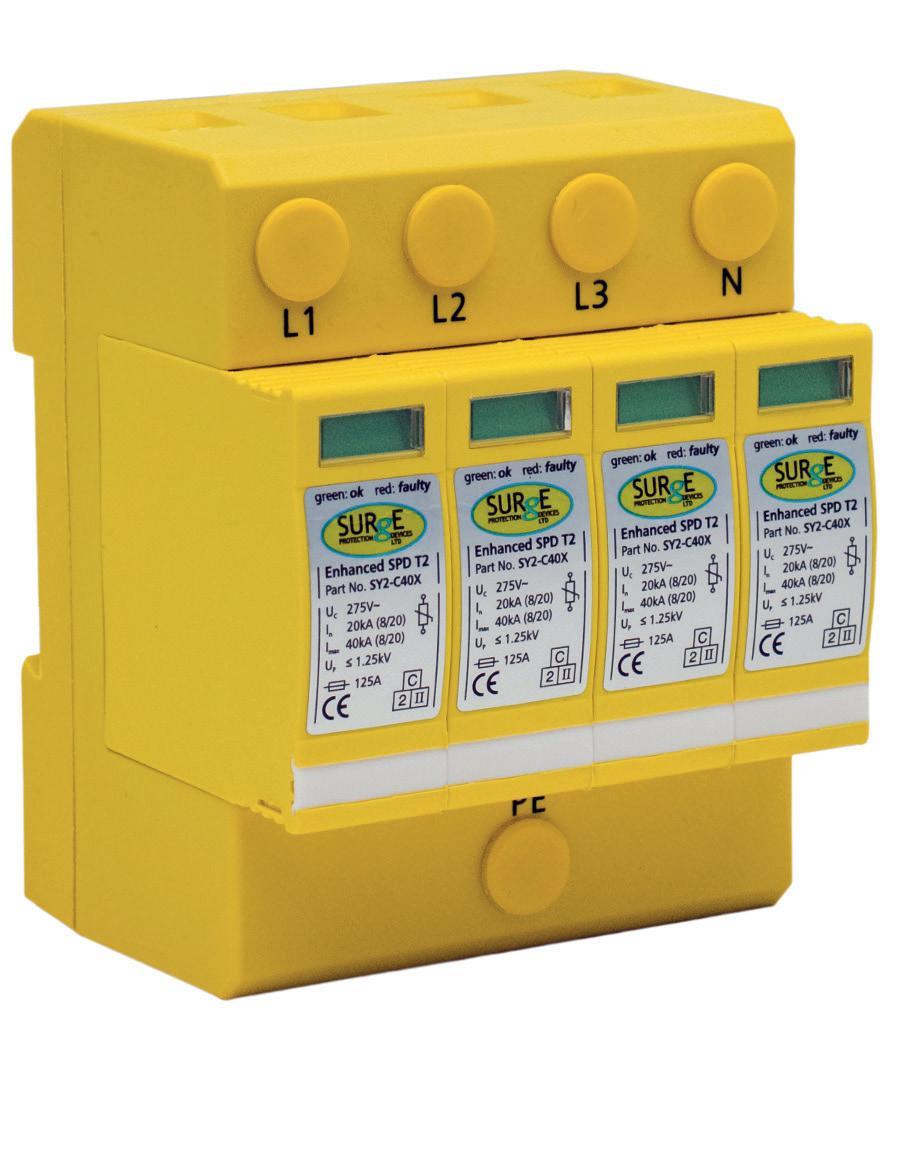
told me they don’t use my company’s products. What is important to me, is that the education is there to ensure that the correct devices are selected and installed, that people understand the wiring regulations regarding surge devices, understand why they are being installed and they are being installed correctly - not what brand of SPD is being used.
I hope, going forward, we don’t forget the value of CPD and its importance to ensure that we, as an industry, stay relevant and up to date.
To find the links to our training academy, where you can sign up for free, please visit: www.surgedevices.co.uk

“Due to the pressures of working as an electrician, CPD gets put on the back burner, especially for small contracting companies and sole traders, who have to lose income to complete valuable training. I saw so many people on social media who made massive accomplishments in learning and training during lockdown, that during a normal period, would have been impossible.”

The UK’s electrical industry is undergoing a period of significant transformation. Neil Vincent, NICEIC head of business development and Strategic Partnerships, discusses the importance of training for industry professionals to adapt to this evolving environment
Driven by the government’s ambitious net zero targets and a growing consumer demand for sustainable solutions, electricians are facing a new landscape where renewable technologies, like solar power and energy storage systems are rapidly becoming the norm. For NICEIC, the UK’s leading certification body for the electrical industry, this presents both exciting opportunities and challenges.
Upskilling for a sustainable future
TThe rise of renewable technologies necessitates a shift in skillsets for electricians. Traditional wiring expertise, while still fundamental, now needs to be complemented by a deep understanding of new, sustainable technologies. Electricians who can confidently install electric vehicle charging points (EVCPs), solar photovoltaic (PV), and energy storage systems will be in high demand with customers. NICEIC is a recognised Electrician Plus training provider. This concept from The Electrotechnical Skills Partnership (TESP) underlines the importance of qualified electricians for installing low-carbon and renewabwle technologies. Their model emphasises that after becoming a qualified electrician, you only need additional continuing professional development (CPD) training and qualifications in specific new technologies to perform safe and compliant installations. This demand is driven by several factors. Firstly, the UK Government’s commitment to achieving net zero emissions by 2050 is fuelling significant investment in renewable energy infrastructure. Secondly, a growing number of homeowners and businesses are embracing sustainable solutions to reduce their carbon footprint and energy bills, following the recent




cost-of-living crisis. To make the most of these opportunities and grow with the industry as it changes, electricians need to embrace CPD. Fortunately, there is a wide range of training options available to help industry professionals upskill.
The benefits of training and certification
Beyond immediate career prospects, training offers several long-term advantages for electricians. Relevant training courses provide valuable CPD points through recognised industry qualifications, ensuring electricians remain up to date with the latest regulations, trends and safety standards to futureproof their skillset.
By embracing these CPD opportunities, electricians are not only investing in their own long-term employability, but also playing a vital role in the UK’s transition to a sustainable future through meeting this demand. Businesses with a dynamic and skilled workforce are essential to ensuring the safe and efficient implementation of renewable technologies, which then feeds back into the government’s net zero targets. Businesses can also benefit from the training that their staff members undertake, helping to expand the portfolio of services they can offer to customers.
With over 40,000 certified businesses in the UK, NICEIC ensures electrical businesses are
meeting the industry standards and regulations. NICEIC-certified businesses will be listed on the ‘Find a trusted NICEIC tradesperson’ tool, a valuable resource that connects businesses with potential customers seeking competent and qualified electricians. Additionally, NICEICcertified businesses gain access to a wide-range of exclusive resources, including our technical helpline, THE WIRE webinars, and e-newsletters.
Making training accessible
NICEIC boasts a comprehensive network of training venues across the UK. These centres offer a diverse range of courses designed to equip electricians with the knowledge and practical skills needed to work safely and effectively with renewable technologies. We’re constantly expanding our course portfolio to reflect and adapt to the evolving needs of the electrical industry. For example, our centres in Penkridge, Telford, and Maidstone are now running courses for new qualifications specifically focused on EV charging installation, solar power, and electric energy storage.
The UK’s electrical industry is rapidly transforming, driven by sustainability goals and consumer demand for renewable technologies and sustainable solutions. Electricians and businesses who embrace continuous learning and upskill in areas like EV charging, solar power, and battery storage will be wellpositioned for success.
NICEIC is dedicated to supporting this journey by offering accessible training courses and industry-leading certifications, empowering professionals to thrive in the evolving industry and contribute to a greener future.
To find out more about NICEIC training, please visit niceic.com
“By embracing these CPD opportunities, electricians are not only investing in their own long-term employability, but also playing a vital role in the UK’s transition to a sustainable future through meeting this demand. Businesses with a dynamic and skilled workforce are essential to ensuring the safe and efficient implementation of renewable technologies, which then feeds back into the government’s net zero targets.”
Develop Training, one of the UK’s leading accredited providers of Compliance, Technical, and Safety training, has announced the launch of a confined space safety campaign aimed at Small and Medium-sized Enterprises (SMEs). The initiative includes an online toolkit designed to enhance workplace safety and ensure regulatory compliance
With a client roster that includes some of the UK’s most prominent organisations in the utilities and construction, defence, healthcare, facilities management, and telecommunication sectors, Develop has established itself as a trusted name in the training arena. Annually, the company trains over 30,000 professionals, providing them with the skills and knowledge necessary to maintain high standards of safety and compliance.
The newly launched confined space safety toolkit is a vital resource for SMEs, providing them with the information and tools needed to navigate the complexities of the Confined Space Regulations 1997. The toolkit is available on Develop’s website and is designed to help businesses understand their legal obligations, identify confined spaces, implement appropriate safety measures, and access necessary compliance training.
“Our goal is to ensure that all businesses, regardless of size, have the resources and knowledge to keep their employees safe,” said Kate Denial, Operational Training Manager at Develop Training. “Confined spaces pose significant risks, and it is crucial that employers
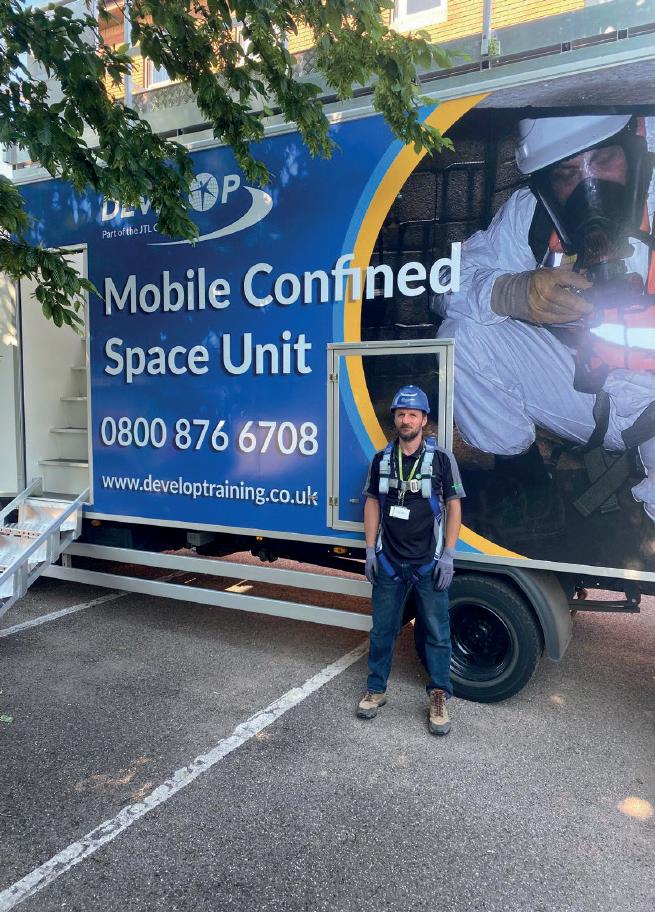

are aware of their legal responsibilities to recognise these dangers and know how to manage them effectively.”
The campaign highlights several key aspects of confined space safety:
1. Understanding Legal Obligations: The toolkit provides a detailed overview of the legal requirements under the Confined Space Regulations 1997, helping businesses ensure they are in full compliance.
2. Identifying Confined Spaces: It offers guidance on how to identify confined spaces within the workplace, which is the first step in managing these potentially hazardous environments. Develop also offer a consultancy service whereby they can visit employers and provide comprehensive guidance and support.
3. Implementing Safety Measures: The toolkit includes best practices for taking appropriate actions to mitigate risks associated with confined spaces, including the use of safety equipment and emergency procedures.
4. Access to Training: SMEs can access a range of compliance training programmes through Develop, designed to equip their workforce
with the necessary skills to operate safely in confined spaces.
By launching this campaign, Develop is underscoring its commitment to workplace safety and regulatory compliance, particularly for smaller enterprises that may lack the resources of larger organisations. The company’s in-house expertise and wide range of training programmes aim to create safer working environments across various sectors.
For more information on the confined space safety toolkit, visit: developtraining.co.uk/ confined-space-safety-toolkit

Energy efficiency is the process of lowering the amount of energy needed to perform specific tasks or outcomes. Energy efficient homes use less energy for everything from cooling or heating, to running electrical devices and systems. The ONS has stated that the “age of a property is the most significant factor associated with energy efficiency.” The report goes on to claim that due to building techniques and regulations, the age of a house will have an effect on the levels of energy efficiency.
The rebuilding after the war led to the construction of many new homes. The main goal during this period was more on housing shortages than energy efficiency, though it set the stage for later developments.
In this period of time, most British households were using solid forms of energy to fuel their homes. Reports claim that “coal remained the dominant fuel in working-class homes,” even if the war had made the costs of gas and electricity relatively lower. Due to its longer burn time, it fuelled the majority of home stoves and furnaces, albeit at the expense of the environment.
1970s (oil crisis)
In the 1970s, many countries faced petroleum shortages. The oil crises spurred the first serious considerations of energy efficiency in homes due to the soaring costs of energy, as well as awareness of finite fossil fuel resources. Slowly, homes began to shift towards better sustainability in building practices and energy use. Prior to the crises, British homes were poorly insulated. With the rise in energy costs, homeowners began to prioritise home insulation. Double-glazing became widespread in an effort to conserve energy and heat within the home as well as loft insulation and draught-proofing. Higher oil costs pushed innovations to produce more efficient boilers and the introduction of gas central heating. This form of heating was much more sustainable and efficient than the oil and coil heaters that were used at the time. As well as this, solar water heaters became more popular towards the end of the 1950s in an attempt to save energy in more rural areas.
Initial regulations specifically addressing energy conservation in buildings were initiated.
Introduced in the Building Regulations 1985, Part L was specifically focused on the conservation of fuel and power. It set out

minimum standards for the energy efficiency of new buildings, including requirements for thermal insulation and the efficiency of heating and hot water systems. Thermal insulation specified minimum U-values for different parts of the building envelope (walls, roofs, floors, etc) in order to prevent losing heat through the building fabric. Heating systems were ensured to be energy efficient – pipes and ducts were insulated to lower energy waste. Regulations began to address the need for adequate ventilation alongside improved air tightness to avoid problems such as condensation and mould, which can arise from increased insulation levels. The 1980s regulations also started to address the performance of windows and doors, although stricter requirements for glazing would come later. This focus was on reducing drafts and improving the installation quality.
These regulations marked a pivotal shift in building practices in the UK, with a growing recognition of the importance of energy efficiency not just for reducing energy costs but also for environmental conservation.
Energy efficiency standards in the 1990s and 2000s
This period saw significant advancements, including the introduction of the Energy Performance Certificates (EPCs) and improvements in the building regulations concerning energy efficiency.
The Home Energy Conservation Act was introduced in 1995. This act required local authorities to prepare an energy conservation report setting out measures likely to result in significant improvements in the energy efficiency of all residential accommodation
in their area, helping raise awareness and encourage local energy-saving initiatives.
ECPs are required when buildings are built, sold or rented. They were introduced to help homeowners become more aware of the energy buildings use and are given as a result of an inspection to provide the new occupants a detailed understanding of the energy performance of the building. Any home with an Energy Performance Certificate (EPC) has a rating from A to G, reflecting how efficient a house may be, how much it may cost to heat and power and what the greenhouse gas emissions may be.
The 2000s also saw a greater emphasis on integrating renewable energy sources, such as solar panels and heat pumps. Incentives such as feed-in tariffs introduced towards the end of the decade helped promote the adoption of these technologies.
Early 2010s (The Green Deal) Government initiatives aimed to retrofit existing homes to improve their energy efficiency.
Although the Green Deal was not entirely successful, it marked a pivotal moment in policy towards energy efficiency. The Green Deal was designed to help homeowners increase the energy efficiency of properties and reduce greenhouse gas emissions. It worked through the process of allowing customers to pay for some or all of the improvements over a period of time. They were described to be “a new type of unsecured loan,” with interest.
Energy Company Obligation launched alongside the Green Deal in 2013 and required major energy suppliers to help low-income households and those in poorly insulated
homes to reduce their energy bills through improvements such as loft and wall insulation or boiler replacements.
The Renewable Heat Incentive, introduced in 2014 for homeowners, incentivised the installation of renewable heating systems, like biomass boilers, solar water heating, or heat pumps. Participants could receive quarterly payments over seven years based on the amount of clean, green renewable heat their system produced.
The Future Homes Standard 2025 is a crucial element of the UK government’s strategy to significantly reduce greenhouse gas emissions from the residential sector, aligning with broader commitments to achieve net-zero carbon emissions by 2050. The main aspects of this strategy include:
• Zero-Carbon Ready Homes: the standard mandates that new homes built from 2025 should be “zero-carbon ready”, meaning that these homes should have 75-80 per cent lower carbon emissions compared to current levels under the 2013 building regulations.
• High Levels of Insulation: to achieve these carbon reduction targets, new homes must incorporate significantly higher levels of insulation. The aim is to reduce the demand for heating and
cooling, thereby lowering energy use and associated emissions.
• Low Carbon Heating Systems: traditional heating systems powered by fossil fuels (like natural gas boilers) will be phased out in new homes. Instead, the focus will be on low-carbon heating solutions such as heat pumps, which are more efficient and have a lower environmental impact.
• Renewable Energy Integration: the standard encourages the integration of renewable energy technologies directly into new homes. These systems help reduce reliance on the grid and increase self-sufficiency.
• Smart Technologies and Energy Storage: to manage energy use efficiently, the Future Homes Standard also supports the integration of smart technologies and energy storage solutions. Smart home energy management systems can optimise when and how energy is used, for example, by using cheaper off-peak electricity to heat the home.
• Ventilation and Air Quality: with homes being made more airtight to improve energy efficiency, adequate ventilation becomes crucial to maintain indoor air quality. The Future Homes Standard emphasises advanced ventilation systems that can provide fresh air and improve health outcomes without compromising thermal efficiency.
Today, energy efficiency is reflected in all new homes that are built. In the UK, Octopus Energy has partnered with housing developers such as Hopkins Homes to introduce Zero Bill homes. The homes are fitted with cutting-edge green technology throughout to minimise greenhouse gas emissions, with new homeowners subsequently benefitting from a Zero Bill energy tariff. Technologies such as an air source heat pump, integrated photovoltaic panels, battery storage, wastewater heat recovery system are a few to name.
The evolution of energy-efficient homes in the UK is a testament to the nation’s growing commitment to sustainability and environmental responsibility. Starting from the post-World War II reconstruction efforts, which focused primarily on addressing housing shortages rather than energy efficiency, the UK’s approach to residential building has undergone significant transformations. Overall, the evolution of energy-efficient homes in the UK illustrates a dynamic and progressive journey towards a more sustainable future. This trajectory not only aligns with global environmental goals but also addresses practical aspects of livability and affordability, making it a critical aspect of modern urban planning and development.
For more information, please visit: https://www. hopkinshomes.co.uk/suffolks-first-zero-billshomes-with-octopus-energy/

The Refinery is a purpose-built student accommodation development in Leeds. It opened in 2021. A combination of studio and bedroom cluster flats accommodate 407 residents. Fresh Student Living manages the scheme on behalf of specialist investment company Curlew Capital.
Kristian Mills, Director of Asset Management at Curlew Capital is responsible for the mobilisation of properties and ensuring they are operated effectively. He explains: “Over the first two of years of operation we found that we were spending more on utilities than we had expected for a property of this size. Students were able to override the programming on the heaters, turning them up to maximum and leaving them running continuously. To exacerbate the high use of electricity, windows would be opened and closed to regulate temperature. We were witnessing huge wastage. Costly in monetary terms, but as a company fully committed to its 2030 net-zero targets we needed to seriously consider this impact. One of the big things we identified, within our capability, is the control of energy for heating.”
Kristian sought to reduce this. “There were several solutions where sensors are placed in the bedrooms. They provide information on humidity, CO2, light etc. and had PIRs so you could monitor occupancy. But there weren’t many that controlled what was going on in individual rooms. I’ve been in student accommodation 20 years and have come across many heater panels with boosted control functions. I’d never come across anything where you can centrally control the heating system.”
Proportion of energy used for heating as a percentage of total consumption
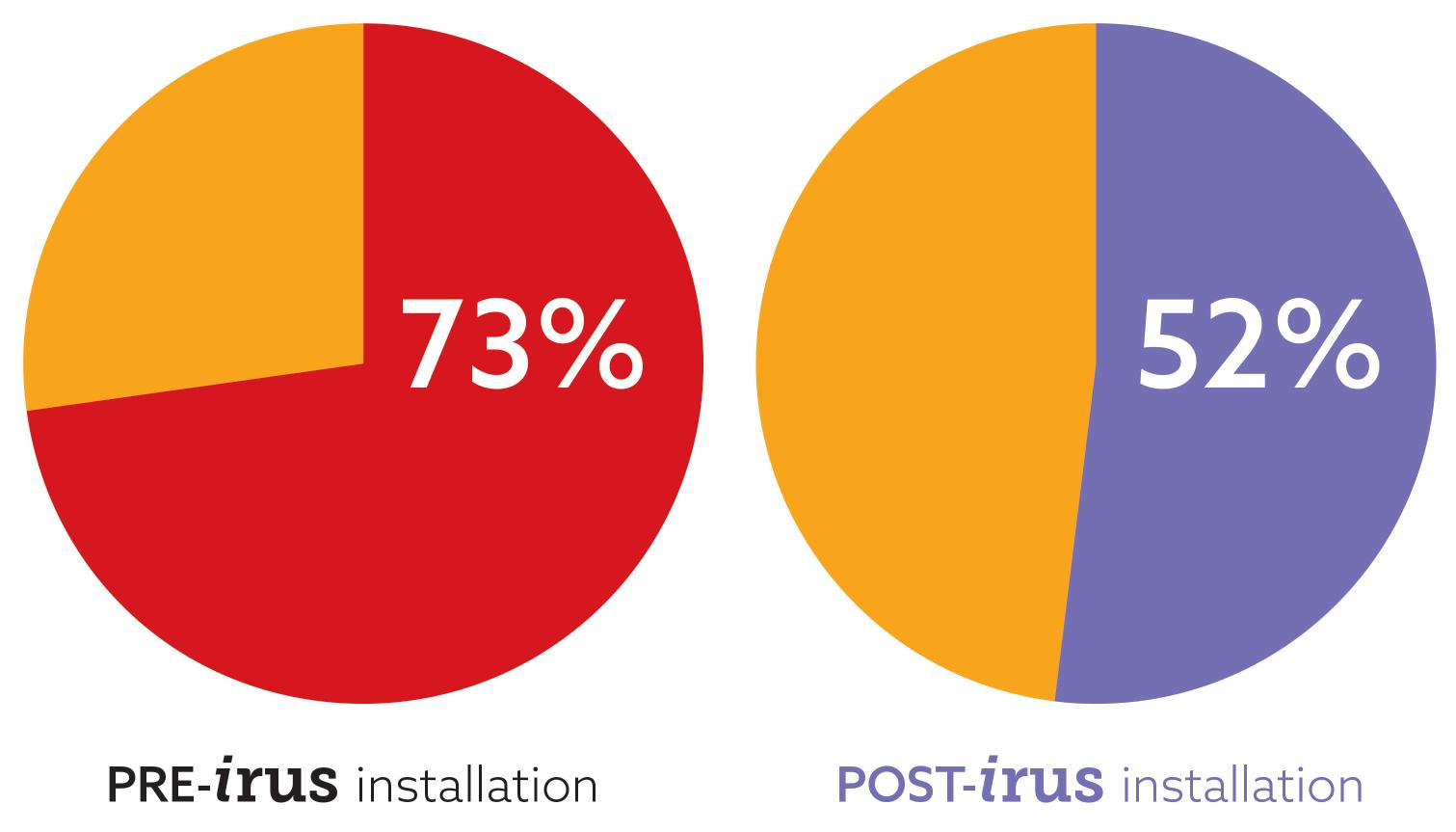
Kristian discovered Prefect Controls. They were confident that Irus could sort the problem and return results promptly. Irus is Prefect’s Building Energy Management System developed specifically for student accommodation. Control units in each room monitor conditions, and switch heaters on and off. The control units communicate with a central hub connected to the web based Irus Portal. Managers monitor and control individual rooms remotely.
Irus doesn’t restrict heating. It avoids unnecessary energy consumption: reducing heat input when rooms are unoccupied; windows are opened; and when occupants leave a room that’s in Boost state.
“There were three distinct factors that decided the deployment of Irus,” Kristian
Reduction of total consumption and heating consumption

continues: “The availability of data on bedroom usage; Lowering of energy costs; and reduction of our carbon footprint.”
The first year’s performance is impressive.
• Heating energy halved 598,892kWh to 301,910kWh
• Total electricity 816,064kWh down to 575,420kWh
• Proportion of electricity for heating - 73 per cent down to 52 per cent
• 50 per cent reduction per bedroom (1,464kwh to 738kWh)
• Almost £70,000 saved
The Head of Energy and Sustainability at Prefect has analysed the data. Gareth Chaplin explains: “Although first year figures are impressive, I can see potential for even greater savings. As operators familiarise themselves with Irus, there are tweaks to settings and profiles that will maximise performance.”
Kristian is clear about residents’ comfort: “It’s important to emphasise there is no restriction in the provision of heating for our guests. If residents need more warmth, managers can increase temperature, and lengthen boost times etc. It’s essential that residents are comfortable. But to run an efficient property and avoid waste, we must be able to monitor energy input and control delivery.”
He continues: “Going forward, we want to make Irus the standard specification for each property. We don’t want to have to retrofit heating systems, just make sure that the best possible system is installed, one that provides most information and control.
“To see 50 per cent reduction in heating load and close to £70,000 saved is phenomenal! We anticipate a return on investment of just over three years. These results highlight just how effective Irus has been.”






































































































With a new Parliament, Jeff House, Director of External Affairs and Policy at Baxi, discusses the drive to decarbonise homes and businesses, the role of heat pumps, and what needs to change from a policy and legislation perspective to accelerate the energy transition
The UK has a labour government for the first time since 2010 and the new Parliament will have to address emissions reductions to set the groundwork for meeting Carbon Budget five (2028-32). With a national target for net-zero emissions enshrined in law, the direction for travel for heating and hot water in buildings is clear. And heat pumps, along with heat networks and hybrid or multivalent heating systems, are seen as the favoured technologies to support the shift from fossil fuels to cleaner, low-carbon heat.
New legislation
Earlier this year we responded to a multitude of consultation documents detailing proposals for new legislation. Government responses detailing final decisions and confirmed implementation roadmaps will be crucial to give industry lead time.
The first is the Future Homes and Buildings Standards which will require new residential and non-domestic buildings to meet stringent emissions standards, designed from the outset for low carbon heat. It is expected that this will mean an end to fossil fuel specification, with heat pumps in particular playing a large role.
The standard is expected to be enacted from 2025 but with a lead-in period and transitional arrangements, which could mean wholesale change is effectively later in 2026 and beyond.
Heat network zoning was also recently consulted upon. Intended to start from 2025, heat network zoning will fundamentally transform the development of networks across England. The policy will designate geographic zones where heat networks are expected to









be the lowest cost solution for decarbonising heat across domestic and non-domestic buildings. Under proposals put forward, certain consumers (such as new buildings, buildings which are already communally heated or businesses over a certain size threshold) will be required to connect to a heat network within a prescribed time frame.
Retrofit
Of course, new build and heat networks are vitally important. However, retrofitting the UK’s existing building stock is perhaps the biggest challenge we need to address. There are endless papers and recommendations from industry bodies and think tanks on how policy needs to adapt to better incentivise the adoption of low carbon heat. At Baxi we believe the key issues which require immediate focus are:
Spark gap: The relative cost of natural gas in comparison to electricity is known as the spark gap or spark spread, which at present stands at around 4:1. Redistribution of policy costs from electricity bills and better representation of the generation mix in the unit cost build up are some of the activities underway which need to be progressed. To make heat pumps and electrically driven systems a truly mass-market proposition, the running costs, compared to a gas boiler counterfactual, need to be attractive and lower carbon options should become the affordable, default choice over time.
Energy Performance Certificate reform and progressive regulation: With EPCs largely calculated based on running costs rather than
emissions, and ongoing debate as to their fitness for purpose in supporting the energy transition, reform is needed. Once the EPC framework is robust and more reflective of sector needs, there is the potential to look at progressive policy which uses the EPC as the basis for enforcement in the future. There are already proposals on this in the form of Private Rented Sector regulation and previously discussed targets for other tenures of property.
Incentive and Funding: With the stated policy ambition to reach an annual market of some 600,000 heat pump installations by 2028, it is abundantly clear that consumer demand needs to ramp up significantly. The Future Homes Standard will deliver a part but retrofit will make up most installations. In the private homeowner segment, the Boiler Upgrade Scheme (BUS) is the main incentive and currently has the budget to support a fraction of the necessary installations to meet ambitions. We would advocate that a more expansive and considered approach is required to deliver mass market volume and that low carbon heat needs to be a truly affordable option for all households before taking alternatives off the table through regulation. We would also recommend that eligibility for BUS is widened to include hybrid heat pumps, amongst other options, to help solutions providers offer a suite of options to address all consumer needs and building types.
We look forward to working with the new government to help provide the UK with hot water and warm homes while actively striving for the decarbonisation of the heating sector.”
For more information, visit: www.baxi.co.uk
“The UK has a labour government for the first time since 2010 and the new Parliament will have to address emissions reductions to set the groundwork for meeting Carbon Budget five. With a national target for net-zero emissions enshrined in law, the direction for travel for heating and hot water in buildings is clear. And heat pumps, along with heat networks and hybrid or multivalent heating systems, are seen as the favoured technologies to support the shift from fossil fuels to cleaner, low-carbon heat. ”
• 27,000 certified heat pump installations in first six months of 2024, which is a 45 per cent increase on same period for last year
• There have been 81,000 certified solar panel installations in 2024
• 7,900 certified battery storage installations, which is already a record with six months of the year still to go
The year 2024 is on track to see more heat pumps installed in the UK than ever before, according to data from MCS (Microgeneration Certification Scheme), the UK’s quality mark for small-scale renewable energy.
In the first six months of the year there have been 27,000 certified heat pump installations in the UK, which is 45 per cent higher than the same period in 2023 – which was itself a record-breaking year for the technology. It means that the total figure for 2024 is almost certain to be higher than any previous years, as the transition to net-zero gathers pace.
Speaking about the increasing number of heat pumps being installed in the UK, Charlotte Lee, Chief Executive of Heat Pump Association, said: “It is fantastic to see the continuing growth in heat pump installations within the UK, underscoring the progress and commitment from the sector in supporting the decarbonisation of heat. Clarity and confidence from the new Labour Government on the direction of travel for the electrification of heat will be crucial to continue the momentum and ensure we stay on track for a record year.”
The data from MCS also reveals more than 80,000 homes have had certified solar panels installed so far in 2024, having surpassed the 1.5 million installations mark earlier this year. Battery storage installations, meanwhile, have reached almost 8,000 certified

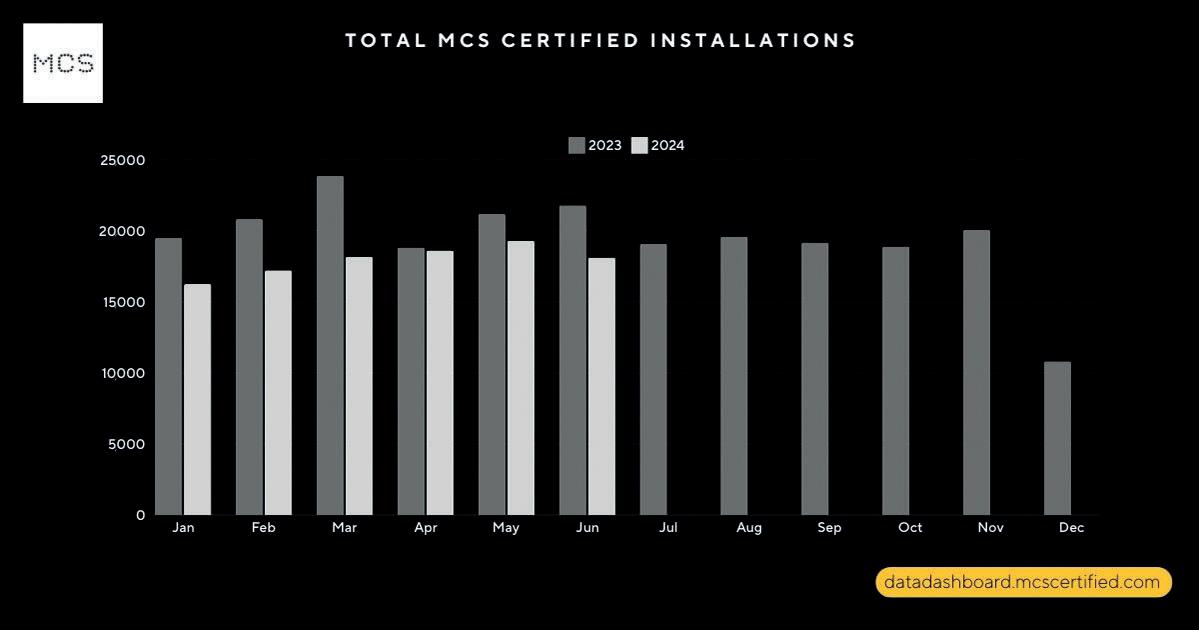
installations in 2024, which is already more than any previous year with six months still to go. It shows a remarkable rise for the technology since the Battery Storage Installation Standard was introduced in 2021, and as homeowners increasingly look to build their own energy resilience.
Chris Hewett, CEO at Solar Energy UK said: “I am glad that consumer demand for solar energy has remained both substantial and stable over the first half of the year, buoyed both by high energy bills and undoubtedly by environmental concerns too. This should provide installers with the confidence to invest in their staff, particularly in recruiting the new people we need to grow the sector.”
“We should also celebrate reaching the milestone of 1.5 million MCS-scale solar installations this spring, not to mention battery storage systems, the natural partner to solar PV, hitting a new record last month. It’s safe to say that now is something of a golden era for smaller-scale sustainable energy.”
Ian Rippin, CEO at MCS, said: “As the decarbonisation of UK homes gathers pace, it’s vital that homeowner confidence in renewables continues to grow alongside that to sustain demand. High-quality installations are key to this because we want everyone to
enjoy the benefits of home-grown energy, so it’s fantastic to see these record numbers for certified installations.
“We also know that alongside consumer trust in the effectiveness of renewable technology, ongoing government support can make a significant difference in helping to make the transition. The recently published Heat Strategy for Wales highlights a clear commitment to heat pumps, and initiatives such as the Boiler Upgrade Scheme (BUS) – which provides up to £7,500 towards the installation of a heat pump – are crucial in providing support to consumers. It is no coincidence that the record number of certified heat pump installations has coincided with a record number of BUS applications in 2024, which is ensuring more homeowners have access to low-carbon technology. It’s something that we hope the government will continue to support as home-grown energy becomes more mainstream in UK homes.”
MCS holds the most comprehensive repository of data on the uptake of smallscale renewable technologies across the UK. For near-real-time updates on renewable installations, you can sign up for free to The MCS Data Dashboard at https://mcscertified. com/about-the-mcs-data-dashboard/
By Olivier Blum, EVP Energy Management Business, Schneider Electric
When considering the challenges we face globally, health and sustainability are never far from the top of the agenda. In fact, they are very closely linked. For every degree of global warming, our life expectancy will shrink by nearly six months, according to a 2024 study published in PLOS Climate. The same research notes that, between 2030 and 2050, climate change is expected to cause approximately 250,000 deaths annually. With such an intrinsic link between health and the environment, it becomes apparent that sustainable solutions don’t just tackle the concerns of our planet, but its people too.
The link between air quality and respiratory conditions has been well established – other links have been drawn to include stroke, ischemic heart disease, chronic obstructive pulmonary disease and lung cancer – whether through increases in blood pressure through the body working harder to lower core temperatures, or extreme heat rising heart rates and blood pressures. This list of conditions underscores the need for actions to improve the health of people and planet.
Decarbonisation therefore also presents a solution to improve the world’s health. The combination of electrification and digitization, what we at Schneider Electric call Electricity 4.0, will improve public health, efficiency, resilience, accessibility and sustainability. This represents a transformative force that holds the key to a healthier and more sustainable future for both humanity and the planet.
It’s in the particles
At the heart of the matter lies air quality. We understand that poor air quality, exacerbated by fossil fuel combustion, poses significant risks to human health. But knowing about the problem hasn’t been enough for us to solve it.
To really get to the core of the problem, we need to understand what causes poor air quality, and this is down to particle pollution. These particles come in varied sizes, with PM2.5 (particles with a diameter of 2.5 micrometers or smaller) being particularly concerning due to their ability to penetrate deep into the lungs and even enter the bloodstream. Sources of particle pollution include vehicle emissions, industrial processes and energy production and consumption. AI and IoT solutions can empower us to monitor air quality in real-time to provide more insights and details on how the situation is changing.

These issues can largely be solved by reducing reliance on combustion related activities. Simple switches to clean energy sources such as driving an electric vehicle can make an impact. Additionally, digital platforms facilitate the integration of renewable energy sources, enhance the efficiency of shipping through intelligent charging infrastructure, and offshore recharging. Hybrid cruise ships will be able to charge while at anchor offshore using power drawn from renewable sources including wind, solar and tidal, with our innovative project off the Orkney islands. Another example is we can undertake process electrification to swap out blast furnaces for cleaner heat sources. By using clean energy sources and electrifying where possible, we can deliver around 75 per cent of the actions needed to reach net zero.
A further challenge we are increasingly witnessing with a warming planet is extreme weather events – and the risk to human health with these are apparent. Tragically, they are becoming increasingly frequent and severe due to climate change. From heatwaves and wildfires to hurricanes and floods, extreme weather events pose significant threats to public health and safety. Globally, the first half of 2024 has highlighted the extent of this problem with significant flooding in Brazil, Dubai and Pakistan. In addition, according to the National Centers for Environmental Information (NCEI), March 2024 saw 3,809 fires burning more than 1,400,000 acres in North America alone, which is roughly the size of the country of Luxembourg.
Electricity 4.0 isn’t just about reducing the size and scale of these events; it’s about making us more resilient in the face of them. Reducing wildfires will have a tangible impact on air
quality which highlights how improving one area positively benefits another.
Integrating digital solutions as part of the planning and response to extreme weather events, powered by reliable clean energy can help protect from disaster too. Advanced weather monitoring systems provide early warnings, allowing communities to prepare and respond effectively. Integrated with smart infrastructure, these systems utilize an array of sensors to gather real-time data on weather patterns and environmental conditions. Employing predictive analytics, they forecast potential hazards and enable preemptive measures to mitigate the impacts of climateinduced disasters.
Treating the issues in front of us
Electricity 4.0 goes even further. It is a vehicle for democratizing access to energy resources, empowering communities to progress and thrive. Solutions such as microgrids are revolutionizing energy access, particularly in remote and underserved areas – increasing energy access for all. Beyond this, microgrids have been shown to support with disaster recovery. We’ve already seen some of the benefits Electricity 4.0 can have in a world of unprecedented weather events, but being able to restore power quickly means critical services can be back up and running.
And that’s only the start of how access to energy can be transformative for improving more than just the health of the planet.
Reliable electricity supply is essential for critical infrastructure such as healthcare facilities, ensuring the availability of life-saving equipment, refrigeration for medicines, and lighting for surgeries and emergency services. By bridging the energy gap, electrification can be a key technology for supporting communities to reach their full potential.
It’s clear electrification and digitization are not just technological shifts or tick box exercises; they possess the power to transform lives. By harnessing the additional benefits clean energy can provide, we can address pressing environmental and public health challenges, through reducing air pollution, improving our buildings to reduce and adapt to natural disasters and to use it as a tool to enable all communities to invest in better healthcare provisions. These investments in sustainability and resilience not only benefit the present generation but also lay the foundation for a brighter and more equitable future for generations to come.
Tom Bloor is managing director of evec, which supplies and installs a wide range of commercial and domestic EV chargers to the public, organisations and businesses
EVs are starting to have a major impact on the way the UK drives. Almost one in five new vehicles registered are electric, and seeing a Tesla during your commute or a trip to the shops long since stopped being a novelty. But if Britain’s transport system wants to be genuinely sustainable, electric cars, buses and lorries need to be the norm, and that is still far from the case. EV charger companies need to focus on innovative ways to provide the infrastructure that can make this happen.
Millions of Britons live in terraced houses, flats or, at least, certainly don’t have a front drive. That leaves it near impossible to charge an EV at home easily and securely. Yet we still have few alternatives to running a lead from a car to the front door. A priority for EV charger companies must be to find ways to work with local authorities to create public charging points for villages, high streets and housing estates. These can benefit shops and restaurants, who may get extra footfall as people wait for their cars to recharge. Cable gully charge solutions that offer secure on-street charging, such as that developed by Kerbo, need to be rolled out across the country. But this will take innovation into how to install them without insurmountable disruption and costs, and we need to find tougher types of cable that are extremely hard to damage. Many chargers can be controlled by apps, so only the EV owner can switch them on and off, but what further security features can be added to them to give drivers piece of mind?
EVs can’t continue to be a middle-class preserve, but that’s what they are likely to stay, unless we get the cost of domestic EV chargers down from over £1,000 for standard 3.7kW or 7.4kW domestic chargers. Other electrical sources around the home don’t cost anything like this amount. We need to innovate to drive down prices to make chargers feel like part





















of normal home life, like other gadgets in our homes. Charging a domestic car can cost 10p per kWh or less, but there is work to be done here too. Vehicle-to-grid options, where consumers can import electricity when it’s at its cheaper and get paid to supply excess power back to the grid, have tremendous promise. Evec is planning to launch charges with this option in 2025.
At the same time, EV charger companies need to be pushing hard on the creation of a proper national public charging network. We currently have more than 63,000 public chargers and numbers may reach 100,000 by 2025. But there are over 40 million licensed electric, petrol and diesel vehicles in the UK, so an EV-led transport system is currently a distant dream. What’s more, fast-charging DC 300 kW charge points
usually cost upwards of £30,000 and charge up to 79p per kWh or more. That’s not affordable for most local towns or communities to install, and it’s not affordable for many families to use. Evec’s new DC 40kW vecBOLT can increase the amount of power in a car by 80 per cent in an hour, at 59p per kWh, and costs £9,499. It’s a step in the right direction but, as a sector, we need to get prices down still further for EV to out-compete the appeal of traditional vehicles. EV chargers need to be made to be much more affordable for the likes of office blocks and universities to install, too, so that staff can charge their vehicles, while at work. And many companies operating fleets of large vehicles can’t be expected to find £30,000 for one charging station. Economies of scale can and must be found, so that everything from supermarket delivery vehicles to long-distance lorries can go electric.
Technology and electric-appliance companies can be a little obsessed with making gadgets have elaborate display panels and as many functions as possible. But that’s not the direction EV charger companies should be innovating in. We don’t want chargers to be gimmicky or the preserve of tech-junkies. We must make them as functional and simple to use as possible, so that they start to feel as part of an average household’s everyday life as closing the front door when you go off to work. EV chargers need to be able to integrate seamlessly with household solar panels, have solar-only functions and have their own solar-power sources. These shouldn’t be a costly extras. For all their many, many flaws, petrol and diesel vehicles dominate the world because filling them with fuel and running them is pretty straightforward, for the average business or household. The EV charger sector needs to innovate to make electric cars every bit as hassle-free, yet much more affordable.
“EVs can’t continue to be a middle-class preserve, but that’s what they are likely to stay, unless we get the cost of domestic EV chargers down from over £1,000 for standard 3.7kW or 7.4kW domestic chargers. Other electrical sources around the home don’t cost anything like this amount. We need to innovate to drive down prices to make chargers feel like part of normal home life, like other gadgets in our homes. ”
New analysis from Cornwall Insight shows the UK needs to more than double the rate at which it is rolling out publicly accessible charge-points for electric vehicles (EVs) if it is to meet its target of installing 300,000 by the end of the decade
Data analysed for Cornwall Insight’s Electric Vehicle Country Attractiveness (EVCA) Index1, has revealed that as of the end of March 2024 (Q1 2024) the UK had 75,074 publicly accessible charge-points.This means it needs nearly 225,000 new chargers to be rolled out by 2030 to meet its target.
Over the past year, from April 2023 to March 2024, the UK only installed 16,061 new charge points – just over 1,300 a month. If the UK maintained this rate of installation, the country would fall short of its target by almost 120,000 charge-points, jeopardising the transition away from petrol and diesel vehicles. The new UK government will need to raise the number of installations to 2,800 a month to stay on track and meet its target, with this figure only growing for each month that the target is missed.
Delays to programmes including the Rapid Charging Fund, designed to develop the ultra-rapid network at strategic locations (motorway service stations and A roads), have contributed to the slow roll-out. With the pilot, due to launch in 2022, being rescheduled several times, until eventually being launched in December 2023.
Cornwall Insight’s EVCA Index, a quarterly ranking which charts the relative attractiveness of major European nations for investment in
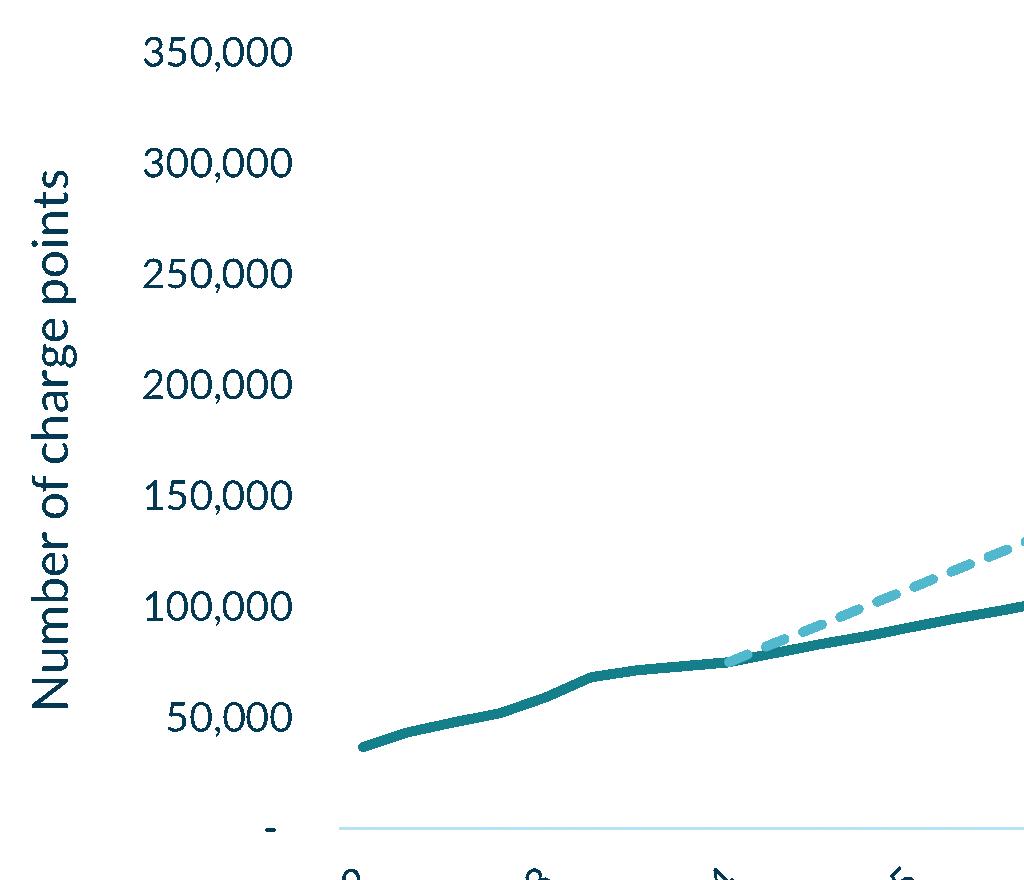

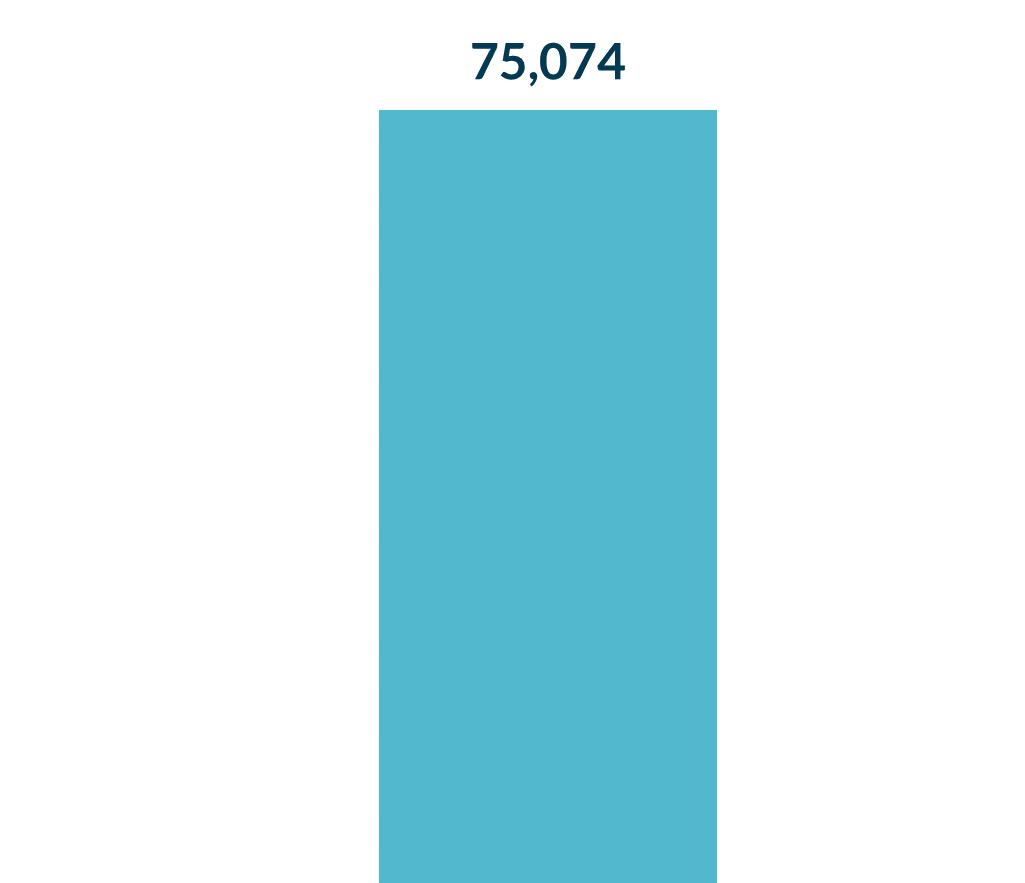
Figure 1: Publicly accessible charge-point growth Q123 – Q124
The
new government
must
make the
expansion of charging infrastructure central to its EV policy if genuine decarbonisation of our transport system is to be achieved.
EVs, currently puts the UK 9th in attractiveness. It trails behind the Netherlands, Norway, France, Belgium, Denmark, Spain, Austria, and Sweden, with the Netherlands taking the top spot.
Figure 2: Charge-point growth needed to meet government targets
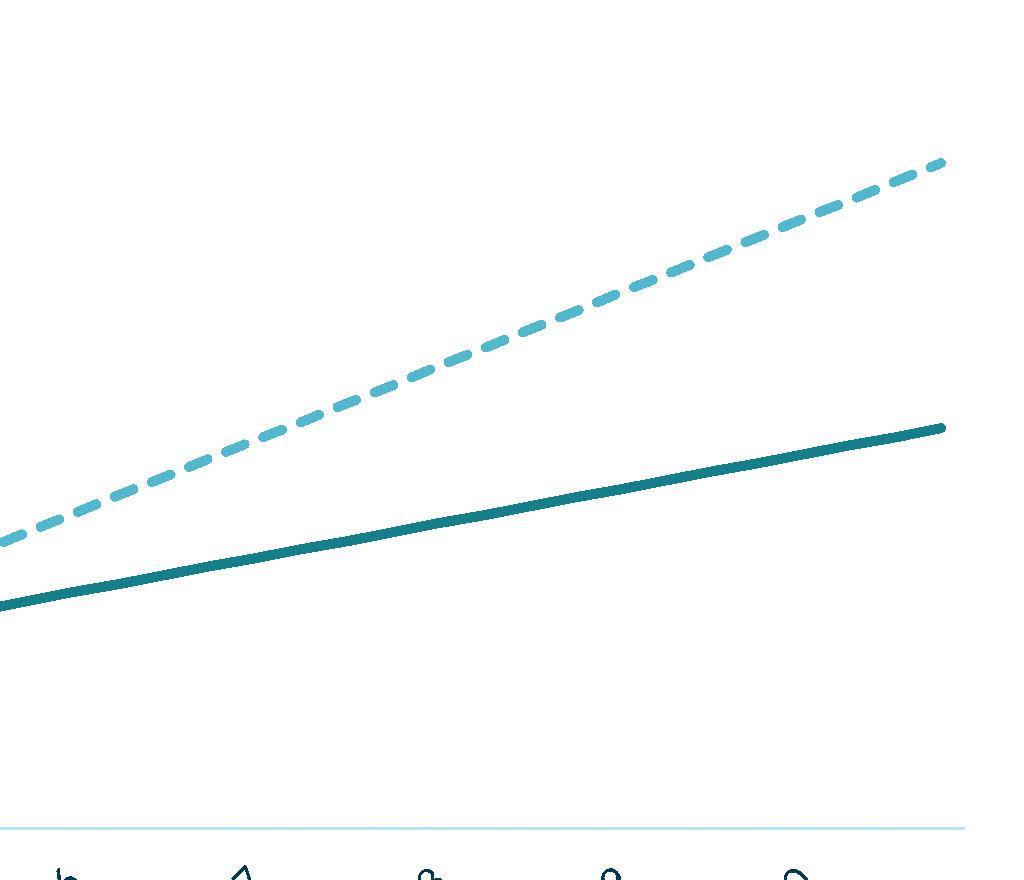
Jamie Maule, Research Analyst at Cornwall Insight: “The UK’s sluggish pace in rolling out EV charging infrastructure poses a significant threat to our transition away from petrol and diesel cars, and towards a greener and cleaner transportation system. To achieve our EV targets, it is essential that we see a major acceleration in charge-point installations. Without this increase, we risk undermining the progress towards decarbonising the UK’s roads and we could see a delay to broader environmental goals.
“Reaching the charge-point target has become even more necessary with the new government pledging to restore the phase-out date of 2030 for new cars with internal combustion engines. Fear around a lack of charge-points is a major reason why many people hesitate to switch from traditional vehicles to EVs. This news could further discourage people from making the move and may impact the restored target date.
“The new government must make the expansion of charging infrastructure central to its EV policy if genuine decarbonisation of our transport system is to be achieved. This includes ensuring that existing policy schemes – such as the Rapid Charging Fund – are implemented swiftly and efficiently and barriers in the planning and grid connections process are removed.”
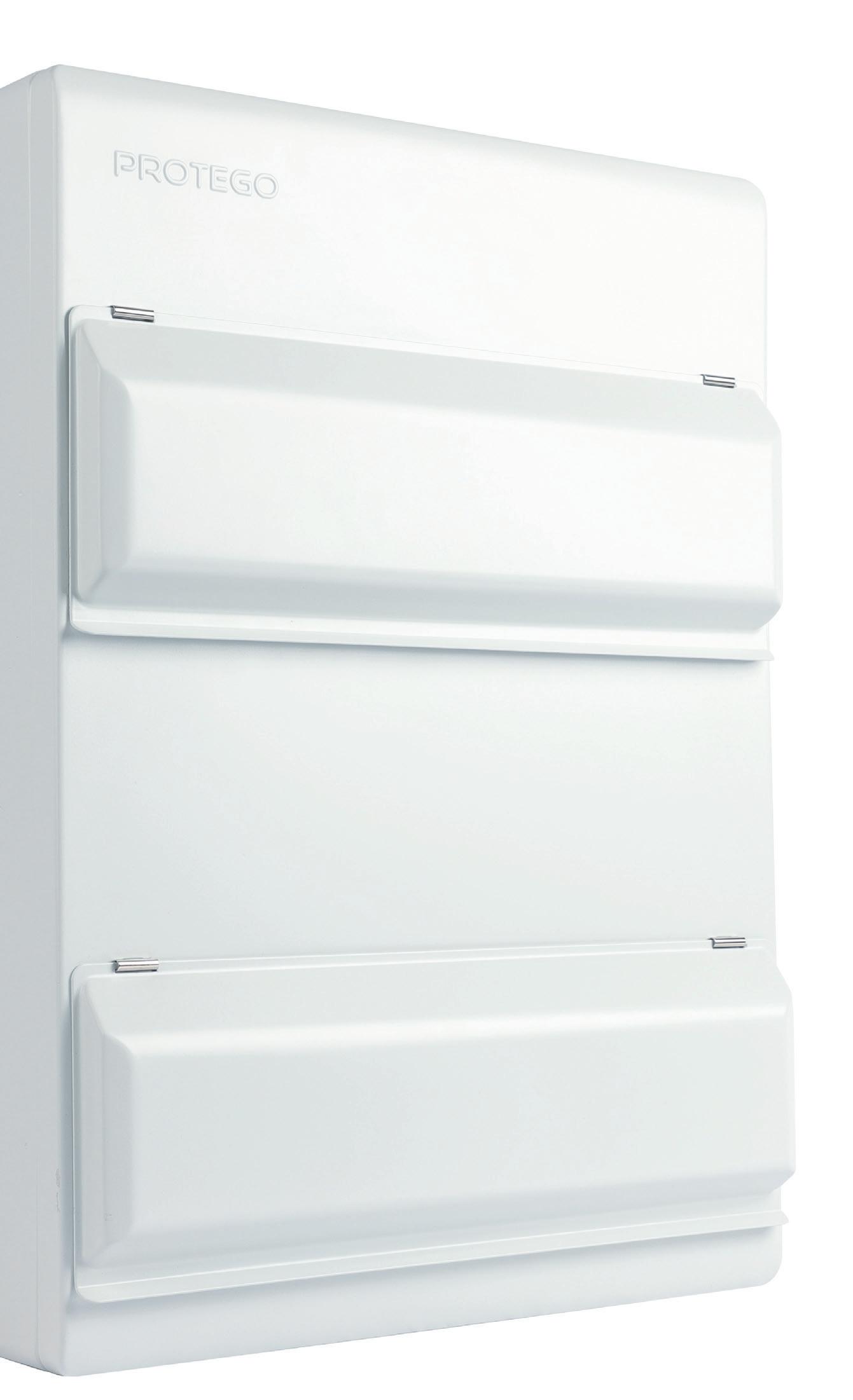


Easier to install with improved design & strengthened construction. Available with a range of devices to comply with the 18th edition amendment 2 regulations.
Existing Niglon devices can be used with Protego boards.
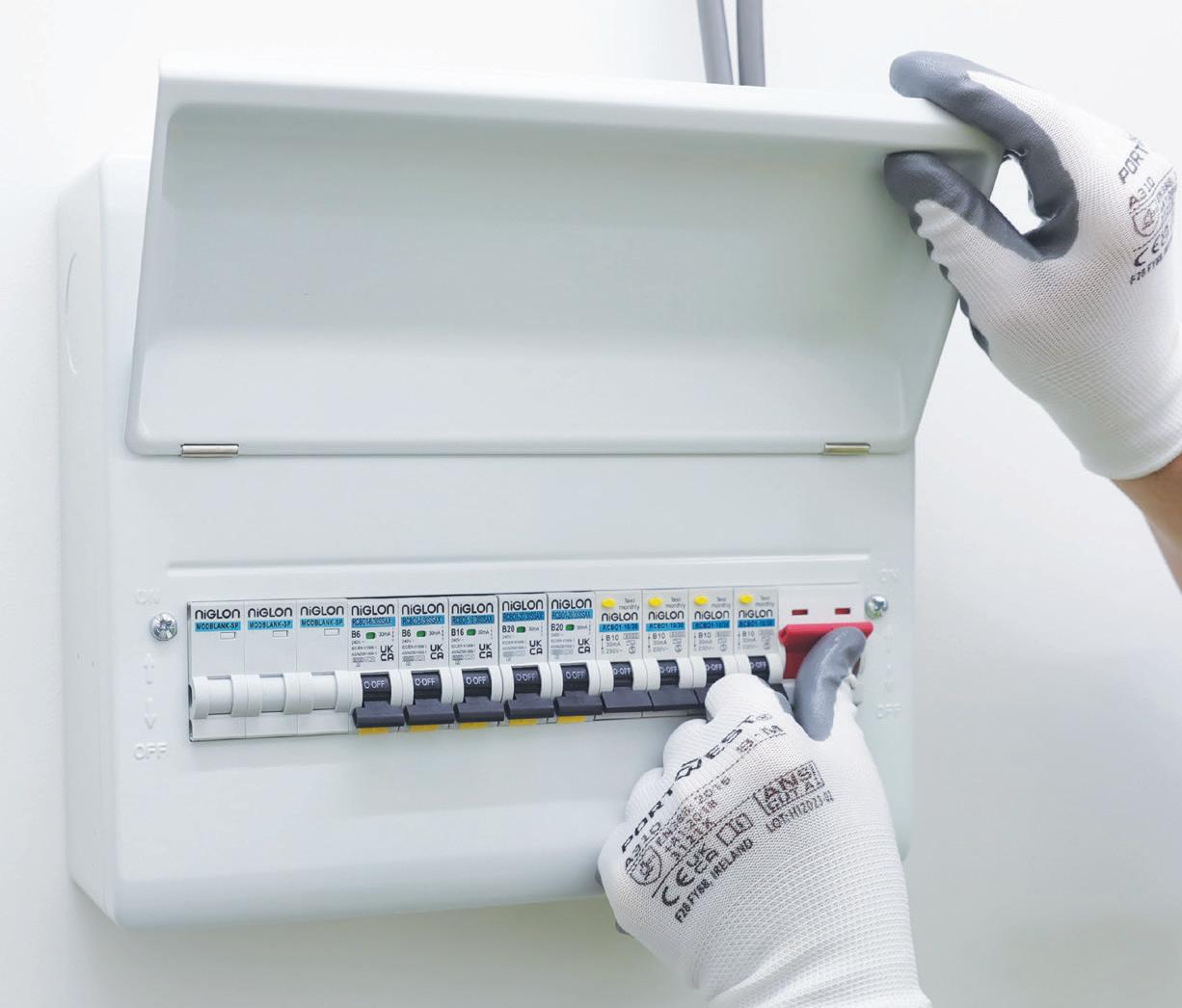
• IP20 • BS EN 61439-3 • Dual Terminal Mains Switch • Deeper board with ample wiring space • T2 Surge protection compatible


















Can you tell us more about yourself and your role?
As the UK Director at Vaylens, and a career dedicated to advancing technological solutions, I now focus on educating the wider market about the challenges and opportunities of the UK’s transition to electric vehicles (EVs) and the efficient management of charging infrastructures.In this role, I am committed to addressing the complex tasks that come with this transition. This includes consulting with fleet operators and Charge Point Operators (CPOs) to understand their specific requirements and advising on the optimal strategies to manage and monetise their charging infrastructure. Recognising that this aspect is often overlooked, I emphasise the critical importance of selecting the right back-end solution.
Through a blend of industry expertise and forward-thinking strategies, I am dedicated to guiding the industry toward a sustainable and efficient future in the era of electric vehicles.
What first interested you in being part of the industry and how did you join?
I have always been interested in helping businesses unlock the potential of cutting-edge tech. At the beginning of my career, I focused on enabling fleet managers to leverage the latest innovations to improve their day-to-day operations. Since joining Vaylens, I have been involved in helping businesses of all shapes and sizes understand how to effectively manage their charging infrastructure, which is a complex but important task. When companies seek to make the transition to electric, leaders often don’t know where to start. I help to plug knowledge gaps and share best practices, which is an exciting job because technology is evolving almost every day, creating a gap for vaylens in a dynamic, fast-changing market.
How has the industry changed since you started?
Businesses have always needed new technology to help day-to-day operations. When I started my career, the challenges were around telematics

and driver safety. Now, the challenge is understanding how to effectively manage their EVs and implement a robust and reliable charging infrastructure to keep the wheels moving. Supporting businesses and employers during this shift is a central part of my job. The key takeaway is that organisations need to use the right management software to ensure the switch to electric is effective and reliable. It’s a journey many businesses are taking, so it’s crucial to make the right choices on software at an early stage to ensure the path is smooth.
What’s the biggest challenge facing the industry?
The transition to EV is a daunting undertaking, even though it’s a fundamental imperative. Despite the availability of government schemes put in place to support the implementation of physical infrastructure, both businesses and individuals have concerns about cost. There are also challenges around the ongoing management of charging infrastructure. Too often, an EV charger is purchased without thought going into how that infrastructure will be managed. There needs to be greater education about how businesses can monitor charge points’ status and state of repair, track energy usage, ensure uptime, and smoothly manage payments and reimbursements.
How can vaylens help overcome these challenges?
Ultimately, EVs are only as good as the infrastructure underpinning
them, and the infrastructure can only function well if it’s backed up with a powerful management system. We believe it’s critical for any EV charging infrastructure to be supported with intelligent, flexible, and scalable management software – so the business can benefit from a well-run, clean, and efficient fleet. We’re focused on helping businesses monitor the performance of their charging stations and intelligently distribute electricity around their network to best meet the shifting needs of their vehicles. Our software simplifies the operation of charging infrastructures and makes the billing of charging processes more efficient. A backlog of charge point errors or a lack of available power could have a major effect on both an organisation’s EV performance and its bottom line, so a robust management platform is a must to keep both under control. We enable charge point operators to make their charging stations accessible to allelectric car drivers with minimal effort. If i was to explain it simply, we aim to make charging straightforward at workplaces, house of multiple occupancy buildings (HMOs), and for vehicle fleets.
What are your thoughts on the future of the industry?
Today, many businesses are focused on making the move to electric. Yet as the technology matures, adoption increases and a wider selection of charge point hardware and management controls come onto the market, making purchasing decisions more difficult. companies will face different challenges around which chargers to deploy and how to build for the future. Education plays a critical role because understanding a challenge is the first step to tackling it.
As a wider choice of EVs becomes available, it will become harder for businesses to know what route to take, which chargers to install and how to best build for the future. Sharing knowledge across the market plays a big part in addressing this. It is also critical to choose the right charge point management software that can help businesses monetise their charging infrastructure, ultimately making their investment in electric mobility worthwhile and ensuring it’s a part of their long-term success.
https://vaylens.com/






Stripping knife – with guide shoe and ratchet function Less effort. More
Ratchet function: easy cutting even for a variety of cable sheaths
Versatile blade with three cutting areas for round and lengthwise cuts Guide shoe protects the conductor insulation under the cable sheath












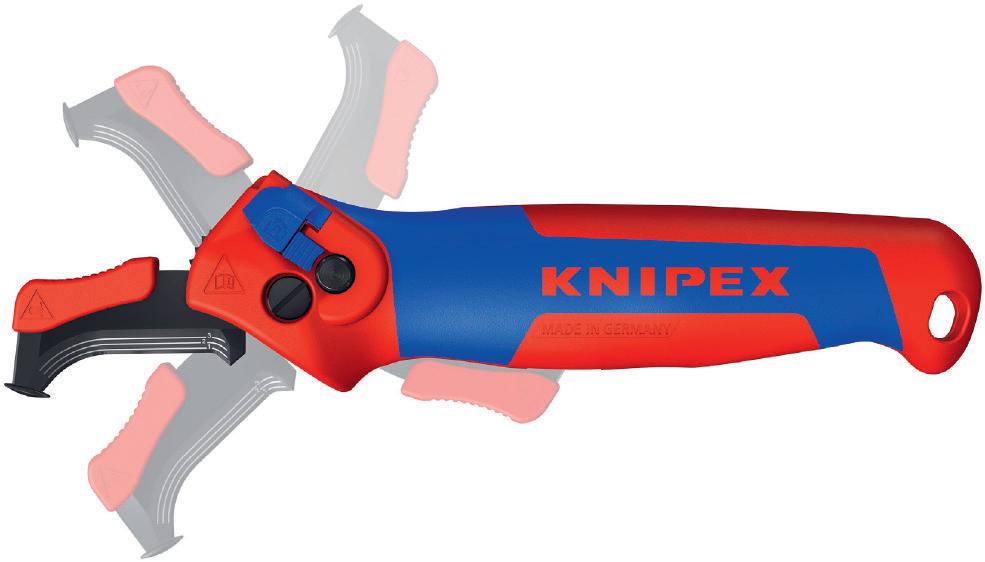


High-leverage joint, long handles and optimised cutting edges: noticeably easier cutting than with compact cable shears
Large cutting capacity: cuts solid copper or aluminium cables up to 35 mm², stranded cables up to 70 mm² and fine stranded cables up to 120 mm²
Dual cutting areas: Stepped cutting edge holds small and larger cables close to the joint during the cut; the front cutting edge cuts very large cables step by step





Q: A:
Can you tell us more about yourself and your role?
I’m the business development manager at Zaptec and have been in this role approaching two years, with nearly four years in the EV charging industry. I work closely with installers to seek new installation opportunities and help to increase Zaptec’s presence across the UK in both domestic and commercial properties. Since starting at Zaptec, I’ve been involved in a number of projects involving everything from fleet and facility management to public sector engagement.
Our partners are great advocates of our brand, and the versatility of our domestic (Go) and commercial (Pro) chargers means we always have a solution, even with the most challenging installations.
What first interested you in the EV industry and how did you join?
I was keen to work in an industry that had ‘legs’ – a sector where I would be part of a ‘revolution’ or transformative change. It quickly became clear to me that electrification of the UK car industry and the revamping of UK charging infrastructure was something I could support. As we have seen, the EV industry is already directly and indirectly playing an important role in people’s lives and the decarbonisation of transport.
How has the EV industry changed since you started?
The changes I’ve witnessed have been driven by the skyrocketing demand for EVs. This has forced charge point manufacturers to innovate and enhance their hardware/software capabilities to meet customer needs and compete



with one another. It is also being driven by government policies, including the ban on combustion vehicles and mandatory charge points for new build homes.
What’s the biggest challenge facing the industry?
To be completely honest, there are plenty! Perhaps one of the most often overlooked is the public’s knowledge of EVs and EV chargers – whether that be residential, destination or rapid charging. In the grand scheme of things, this industry is still in its early stages – it is a big shift for consumers. In that regard, addressing concerns around charger availability, range anxiety, and maintenance costs need to be our industry’s focus.
How is Zaptec keeping up with these changes/ challenges?
We are noticing that many of our customers are coming to EVs from fleet, salary sacrifice, and housebuilder markets. Many are receiving EVs (or chargers) due to company policy or government regulation. These newcomers have concerns and apprehension about the industry in general. So, working with them to better understand our products and ‘living with an EV’ gives them a smooth transition
– it is surprising how quickly you can turn apprehension into appreciation!
Tell us more about Zaptec’s latest launch and how this benefits the installer?
In Q4 this year, we will have a new MID-certified domestic charger called the Go 2 – this is the same design as our award winning 7kW Zaptec Go but with some additional features. Firstly, it includes a display screen that will show energy consumption in kWh. The built-in MID meter allows for a much more accurate measurement of energy consumption, to within 1 per cent, which is useful for fleets or wherever payment, billing, or tax rebates are required. The display can also be used to display the charger’s QR code or the customer’s company logo.
“We are noticing that many of our customers are coming to EVs from fleet, salary sacrifice, and housebuilder markets. Many are receiving EVs (or chargers) due to company policy or government regulation. These newcomers have concerns and apprehension about the industry in general. So, working with them to better understand our products and ‘living with an EV’ gives them a smooth transition.” A: Q: Q: A: Q: A: Q: A:
The Go 2 is also a bi-directional AC charger, which means it will be compatible with vehicle-to-grid (V2G) once it’s available in EVs and tariffs become available. What is V2G? Essentially, allowing cars to act as a battery for the home! The Go 2 will also offer solar integration, making it one of the most capable chargers on the market.
Q: A: Q: A:
What are your thoughts on the future of the industry?
One of the most interesting areas in the EV industry will be growth in the second-hand market. This will be essential to widespread adoption. I think as people upgrade to a newer EV model, other drivers will gain access via the second-hand market and ‘dip their toe in’. At the end of the day, it comes down to how OEMs will be able to support these vehicles long term and whether the infrastructure is there to make them practical. Critically, high-quality home chargers – like the Zaptec Go – are becoming a household essential, making the entire process easier and simpler.
By Daniel Forsberg, CTEK’s marketing manager EVSE
Destinations that have not switched on to providing Electric Vehicle charging risk losing out to rival attractions that have installed chargepoints. EV drivers will increasingly switch from hoping there will be EV charging at shopping centres, leisure attractions, town and city centre car parks, and other destinations. They will expect it, and many will steer clear of destinations where they can’t plug in.
The UK recently smashed through the 60,000 milestone for public charging devices and is on track to reach 100,000 as soon as next year. Zapmap clocked the 60,000 number in April, just six months after the UK reached 50,000 public chargepoints. And Zapmap reckons the 100,000 mark could be seen in August 2025 if the pace of installations keeps up. An average of 1,900 are being installed each month so far in 2024.
The current 61,232 chargepoints have more than 92,000 connectors (some chargepoints, such as CTEK’s CC3, have dual outlets and can charge more than one EV at once). The public chargepoints are a mix of rapid, fast and slow
devices. Slower chargepoints remain the largest number. Slow and fast chargers make up more than 80 per cent of public chargepoints, and they are the mainstay of the destination EV charging landscape.
EV-driving visitors to retail and leisure destinations may want to park and charge for an hour or more, and in that time can get a useful top-up from a slow charge or a more substantial refill from a fast one.
For destinations still considering whether to install EV charging for the public, or for those who have a small number of chargepoints and are weighing up expansion, here’s another big number: there are already more than 1.1 million fully electric cars (BEVs) on UK roads. Add in the 650,000-plus plug-in hybrids (PHEVs) and those destinations with no or insufficient EV charging are making themselves less attractive to an awful lot of potential visitors. Furthermore, with a purchase price premium still attached to BEVs, it is a relatively wealthy audience to dissuade from visiting. With the funding options ranging from fully owned and operated, to joint agreements with charge point installation and operating companies, to simply hosting

chargepoints fully funded by the installer/ operator, there is a model that’s affordable for any destination.
As well as being a good business decision, installing EV charging is a good decision for the country and for the environment. The more public charging that is available, the more the public will be encouraged to switch to electric, with all the accompanying benefits for the climate and for air quality. Destinations wondering if they can afford to install EV chargepoints should be asking themselves if they can afford not to.
For more insights, visit: ctek.com.
EV drivers choosing a home charge point from the designer charging brand Andersen will now benefit from the longest warranty in the market. The company has introduced an unrivalled seven-year warranty as standard alongside its award-winning A3 and A2 charge points.
Each Andersen unit is hand-built to order and undergoes 50 separate quality checks before dispatch to customers. The new warranty demonstrates the brand’s confidence in the quality of its products and applies to all charge points and ancillary items supplied by Andersen from 14 May 2024.
Andersen is committed to delivering the highest standards of customer care, as evidenced by its Lifetime Concierge Service. Customers are allocated a dedicated Personal Concierge Assistant who can guide them through all aspects of living with an EV and how to get the most from every charging experience.
Andersen offers its own in-house installation and customer service teams to ensure it can maintain the highest standards at every customer touchpoint. Andersen’s installation

service recently attained Which? Trusted Trader status, a scheme that provides independent verification that a trader is reputable and has attained the highest standards during a rigorous assessment process. Customers that choose to have their Andersen charge point installed by a third party will also benefit from the marketleading warranty.
Andersen is the highest-rated UK home charging company on Trustpilot with a rating of 4.9 stars out of five, with customers citing its seamless customer experience, unrivalled aesthetics and premium installation service
David Martell, CEO of Andersen, said: “Making the change to an EV can be unnerving
for some, so we aim to make the transition as easy as possible by providing full support from the moment a customer first enquires, right through the lifetime of the product.
“Andersen customers expect the very best, so we introduced the very best warranty on the market. Our 7-year package is another way to reinforce customer confidence in making the switch to the EV.”
In June, the Andersen A3 EV charge point won a Platinum award in the 2024 London Design Awards ‘Product Design’ category. The London Design Awards is an international competition that recognises exceptional designs and outstanding creative projects worldwide.
The award-winning, all-new Andersen A3 and the company’s acclaimed A2 are the only home chargers to feature a cable and plug that are hidden away when not in use. The A3 offers charging speeds up to 7kW and comes with a choice of over 240 colour options, as well as a custom colour palette service that allows customers to colour-match their home charge unit to any beloved item.
For more information, visit: andersen-ev.com
Unicrimp extends its comprehensive range of Q-Crimp electrical sleeving solutions to include new black and grey PVC Sleeving. Used to insulate and protect wiring, cable sleeving keeps the wire safe from abrasion and temperature damage and comes colour coded to make wiring identification easier.
The new additions to the range include:
• 100M x 2MM PVC Sleeving – Black
• 100M x 2MM PVC Sleeving – Grey
• 100M x 3MM PVC Sleeving – Black
• 100M x 3MM PVC Sleeving – Grey
• 100M x 4MM PVC Sleeving – Black
• 100M x 4MM PVC Sleeving – Grey

The Q-Crimp electrical sleeving range can be cut to size to suit the task at hand. More information can be found on the Unicrimp website. www.unicrimp.com
Click introduces new Aquip recessed mounting kits
Click Scolmore introduces a new and innovative recessed mounting kit for its Aquip66 2-gang weatherproof socket enclosures. It will slash socket protrusion by 50 per cent, ensuring a sleek and discreet installation.
The kit is made up of three components – a polycarbonate mounting base, a black silicone rubber seal and a polycarbonate bezel.

Here are four easy steps for installing an Aquip66 2-gang weatherproof socket with the new recessed mounting plate:
• Step 1 - use the mounting base to mark against the wall and chase out approx. 173 x 145 x 42mm from the brick work.
• Step 2 - with the mains power OFF, pull through the mains cable. Then insert wall plugs, screw the mount and seal into position.
• Step 3 - ensure the mounting base is securely screwed to the wall with the silicone rubber seal. Now clip the outer bezel onto the fitting.
• Step 4 - finally, wire up, insert and secure the Aquip66 Weatherproof Socket into the Recessed Mounting Kit.
The kit is available in anthracite grey to match the IP66 Aquip Weatherproof range.
The full Aquip66 brochure can be viewed on the Scolmore Group website as well as on the Scolmore Group app. www.scolmore.com
Knightsbridge’s commercial downlights meet every need
Tailored to address every commercial need from office to factory, Knightsbridge has introduced three new downlights – Kara, Sara and Seren, all of which deliver superior energy efficiency through advanced LED technology, with a rating of at least IP20.

The downlights offer versatile wattage and colour temperature options to meet varying lighting requirements and are compatible with EMKIT2L to provide emergency lighting options. All have generous warranty periods extending up to five years.
There are nine wattage settings, across three different fittings, from 7W to 40W and high efficiency up to 175lm/w. Seren supports various control options including non-dimmable, 0-10V dimmable, and DALI interfaces, suitable for diverse lighting environments. These downlights meet IP40 when installed (IP20 from above) and backed by a five-year warranty.
Knightsbridge's expanded downlight range is specifically engineered to meet the evolving demands of the lighting industry, combining aesthetic versatility with technological innovation. Each series is designed to provide reliable, highquality solutions that can be seamlessly integrated into various commercial settings.
For further details of the Knightsbridge innovative wiring accessories and lighting products, please visit www.mlaccessories.co.uk or call 01582 887760. www.mlaccessories.co.uk

Meridian Lighting are proud to announce the launch of an extensive new range of LED Floodlights, comprising 10w, 20w, 30w and 50w fittings either Standard or with PIR Rotational Sensors.
Finished in black, these stylish new IP65 rated floodlights are built with Die cast Aluminium bodies and Tempered Glass diffusers. With a 120* beam angle, they all deliver a 4,000k cool white temperature output at 120 lumens per watt. That’s up to 6,000 lumens for the 50 watt fitting. IP65 gives ingress protection from all dust and low pressure water jets.
Supplied with adjustable angled brackets and a 1 metre cord, these new Meridian LED Floodlights have an average lifespan of 25,000 hours and are further supported with a threeyear warranty. Quality is assured with CE, EMC, LVD, RoHS and REACH compliances or approvals. Further information please call 0208 503 8500 or visit the website. www.cedelectrical.co.uk
New Three Channel Programmable Thermostat from Sangamo
With energy efficiency top of the agenda for homeowners and businesses, Sangamo is pleased to announce the launch of its new three channel programmable thermostat with RF and Wi-Fi, which provides the means to operate and control separate heating zones within a residential property and in doing so increase efficiency and reduce energy use and utility costs.

The new Sangamo Thermostat Kit is suitable for properties with two-zoned heating systems and is designed to help installers comply with the requirements of Part L Building Regulations where two zone heating is stipulated. The kit comprises two RF programmable room thermostats to control heating over two zones and hot water programming, and one receiver complete with three independent channels – two for heating and one for hot water. The system can be programmed and controlled directly or remotely via the ClickSmart+ app.
Easy installation and ease of programming and operation are at the heart of the new kit. Thermostats can be wall mounted and are supplied with wall-fixing mount, a free-standing base for table top positioning. The thermostats control the receiver via radio frequency, so there is no need for cable runs, and they can be powered either by replaceable batteries or USB-C power source.
The receiver features a large back-lit display screen that ensures full visibility in any light conditions and the intuitive touch button interface makes for easy and complete control. The sleek white design ensures the kit will blend with any interior. www.www.sangamo.co.uk www.espuk.com
Ovia’s floodlight range includes the Inceptor Murus – a range of LED Wall Packs with CTA Switch and a robust IK10 rated housing that makes them ideal in outdoor settings.
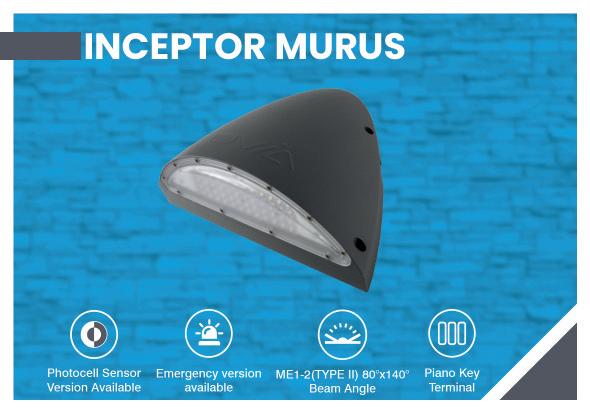
Designed to be fast and simple to install, the IP66-rated Inceptor Murus is available in 15W and 25W options and in a choice of standard, photocell, and photocell and emergency versions. The photocell version can assist with energy saving by allowing the light to turn on and off at set lux levels. Inceptor Murus will turn on when the lux level is below 10-30 lux.
Installation of the Murus is quick and easy, thanks to the Push Fit/Piano Key Terminal Block and the floodlight can be Besa box or trunking mounted. All models include a CTA switch allowing the product to change colour temperature between Warm White 3,000K, Cool White 4,000K and Daylight 6,000K.
Inceptor Murus is available in a choice of anthracite grey or light grey finish and it comes with a five-year warranty. The full range can be seen in the new Ovia Issue 5 catalogue which can be downloaded from the Ovia website.
Watch the video: https://www.youtube.com/watch?v=Pld7osgI2N8 www.oviauk.com
Businesses in the North East of England have been fitted with BG SyncEV chargers thanks to trusted BG SyncEV installers, Get Charging. One such business is Auto Electrics (Teesside) Ltd in Stockton-on-Tees, who have three new electric vehicle chargers for their fleet of company vehicles.
Auto Electrics (Teesside) Ltd are the top auto electrical specialists in the North East of England for the vehicle, plant, and marine industries.
With assistance from the Government’s EV infrastructure scheme, three BG SyncEV chargers were installed at the company’s headquarters, two being installed outside and one being installed inside the working garage space.

“When choosing what EV charger is right for the job, we look at what the client needs and how we can match that to a charger,” says Get Charging’s Sam Armanios.
“With Auto Electrics Teesside, we chose to use the BG SyncEV charger because of its versatility and its integration with the EV management platform Monta, which makes the charging process simple and very straightforward for our clients. It is compact and can easily integrate into any environment and fit the branding of the company with interchangeable faceplates.
“We have a specific aesthetic when installing our chargers which includes custom trunking and wall mounting and BG SyncEV is a great option to match this. With Auto Electrics Teesside, we chose to use a blue trunking on the outside of the building and a silver metal trunking on the inside to match each space. The BG Sync EV charger also has base and rear entry points, so we have multiple options for installation.”
Sam added: “Another way the chargers are versatile, which benefitted the business in this instance is the availability of RFID key fobs. This means that staff can easily use the chargers without having to download an app to control them, so when they are swapping and using different vehicles each day, the available key fobs make charging simpler and easier.”
BG SyncEV chargers can be customised to fit any home or business with two different power output options, 7.4kW Type 2 or 22kW Type 2-phase, either a socketed or tethered connection and can be connected through Wi-Fi, Wi-Fi & 4G, Wi-Fi & RFID, or all three – Wi-Fi, 4G and RFID. www.syncev.co.uk
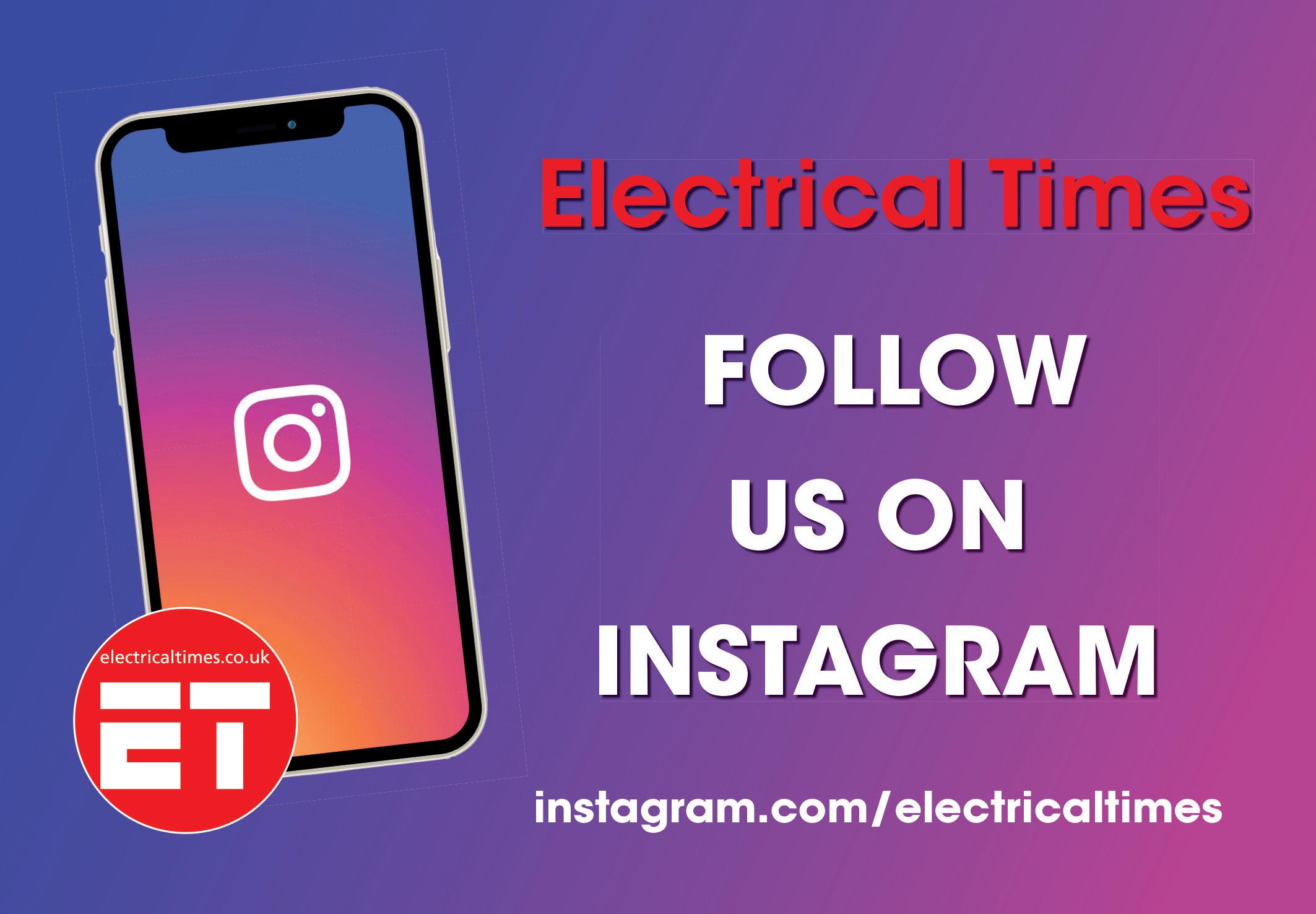
By David Williams, VP Transactional Business – Schneider Electric UK & Ireland
With innovative smart home technologies, a desire for greener homes and offices, and the emergence of more energy conscious prosumers’ the role of the electrician is changing at a fast pace. And with this change comes the need to upskill and evolve in order to maintain and/or grow a profitable electrician-based business.
Over 100,000 additional electricians will be needed by 2032 according to the most recent UK Trade Skills Index, which describes the skills gap engulfing the construction industry as “alarming.” As diverse work opportunities increase, so does the demand for electricians with new and evolving skill sets.
Electricians are at the forefront of the new energy landscape. Staying ahead requires a constant stream of information and training to upskill. To become an ‘electrician of tomorrow’, they must embrace several key aspects crucial for success in the rapidly evolving industry: education, government regulations, net-zero targets, EV/PV technologies, and how to effectively manage the extra energy load requirements of new technologies. Remaining proactive in the quest for new projects and knowledge is essential to capitalising on this tidal wave of new opportunities.
Leading the charge of the EV/PV revolution
The energy industry has completely changed with the rising popularity of electric vehicles (EVs), giving electricians a chance to take the lead. Electricians can offer the EV industry professional advice on infrastructure, installation, and maintenance for charging stations. By working with automakers and EV charging station manufacturers, electricians can become a reliable part of creating a robust EV charging network in the UK.

In the PV segment, electricians can showcase their expertise in solar panel installations and integration with smart home management systems, ensuring energy is used and stored at optimal times. Solar energy is a key component of a more sustainable energy future, and electricians can play a pivotal role in bringing clean energy solutions to homes and businesses. This also extends to the management of the added electrical load arising from the growing adoption of electric vehicles (EVs) and renewable energy sources.
Overload management: inventive panels and customer education
The issue of controlling the additional load on electrical grids posed by the growing use of EVs and renewable energy sources needs to be addressed by electricians. Smart panels and electric vehicle supply equipment (EVSE) together can improve energy use while maintaining grid stability.
Electricians should be knowledgeable about advanced load management systems and energy storage solutions. By offering comprehensive consultation on the benefits of smart panels and energy-efficient practices, electricians can empower users to make informed decisions about their energy usage.
Consumer education is also paramount to driving the adoption of sustainable solutions. By discussing options with developers and businesses when quoting, electricians can grow awareness of the advantages of net-zero energy consumption and how they can be achieved through EV technologies and smart panels.
Thinking outside of the (fuse)box
An effective marketing and web presence is a powerful tool for electricians to reach and engage with potential clients. The cornerstone of marketing success lies in a well-optimised
business website. By deploying keywords and local SEO strategies, electricians can improve their visibility in online searches. Social media platforms, such as YouTube, Instagram and even TikTok, can also facilitate direct interaction with customers, showcasing successful projects, answering questions, and receiving valuable feedback. Emphasising professionalism, customer reviews, and user-friendly website navigation can further boost the credibility and appeal of the business.
Nailing a good social media strategy as an electrical business can turn traditional resources, usually long-form and wordy, into short, digestible content that illustrates the interesting work that electricians do daily. It’s small things like this that will help the industry to step into the next age.
Embracing the future and giving the electricians of tomorrow the power they need
Ultimately, electricians should welcome new technology and the specialised skills required if they want to remain ahead of the curve. By investing in new software tools, electricians can streamline project management, automate processes, and improve overall efficiency. By actively seeking out accreditations for low-carbon technologies like solar panels, heat pumps, and EV charging stations, electricians can also meet the growing demand for sustainable solutions.
The journey to becoming tomorrow’s electrician requires a comprehensive approach, including ongoing education, flexibility with evolving regulations, proficiency in EV/PV technologies, innovative load management, and educating consumers for energy-efficient homes. Those electricians embracing these facets will excel in the dynamic electrical industry, shaping a sustainable future.
“The journey to becoming tomorrow’s electrician requires a comprehensive approach, including ongoing education, flexibility with evolving regulations, proficiency in EV/PV technologies, innovative load management, and educating consumers for energy-efficient homes. Those electricians embracing these facets will excel in the dynamic electrical industry, shaping a sustainable future.”

